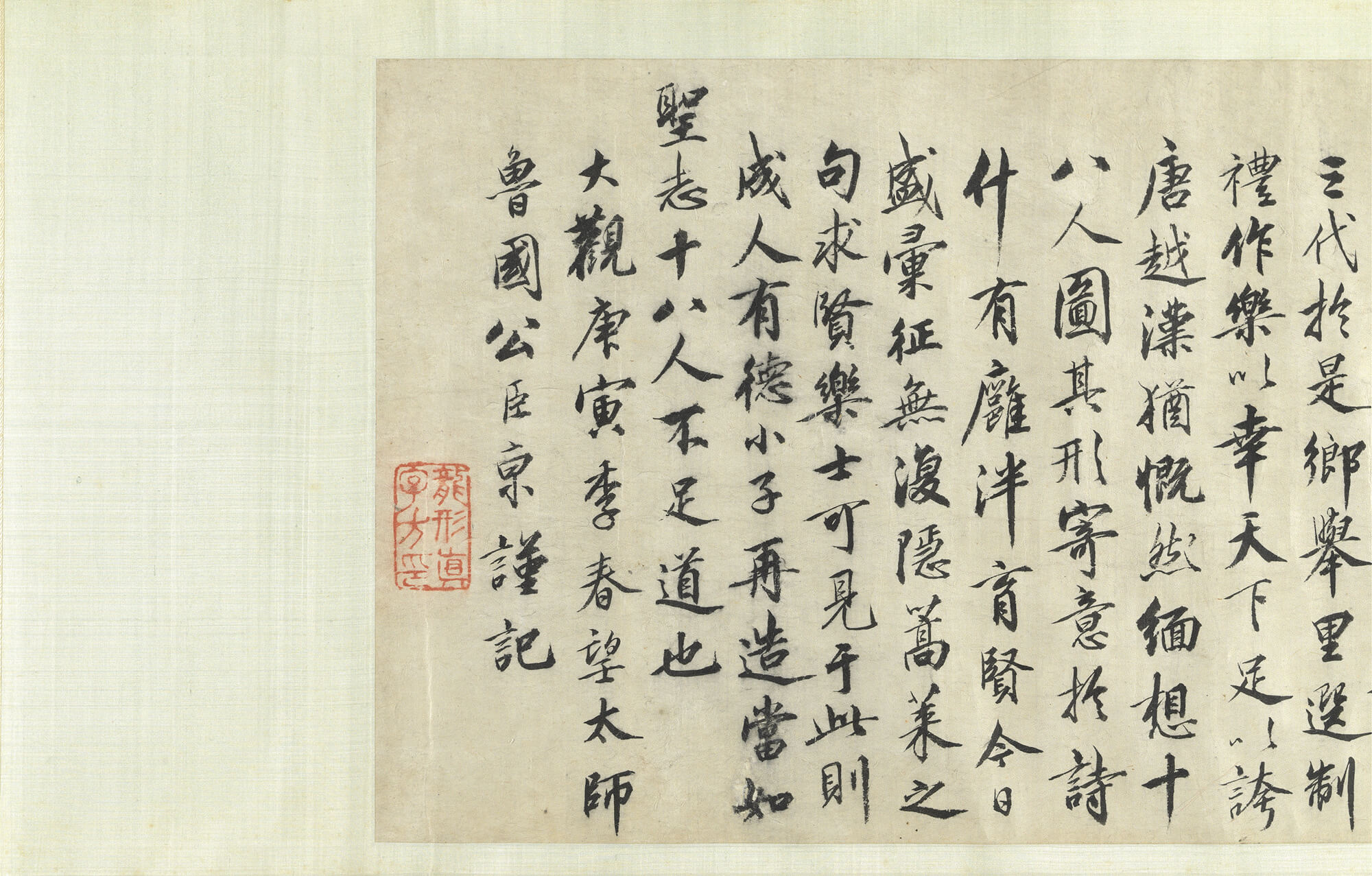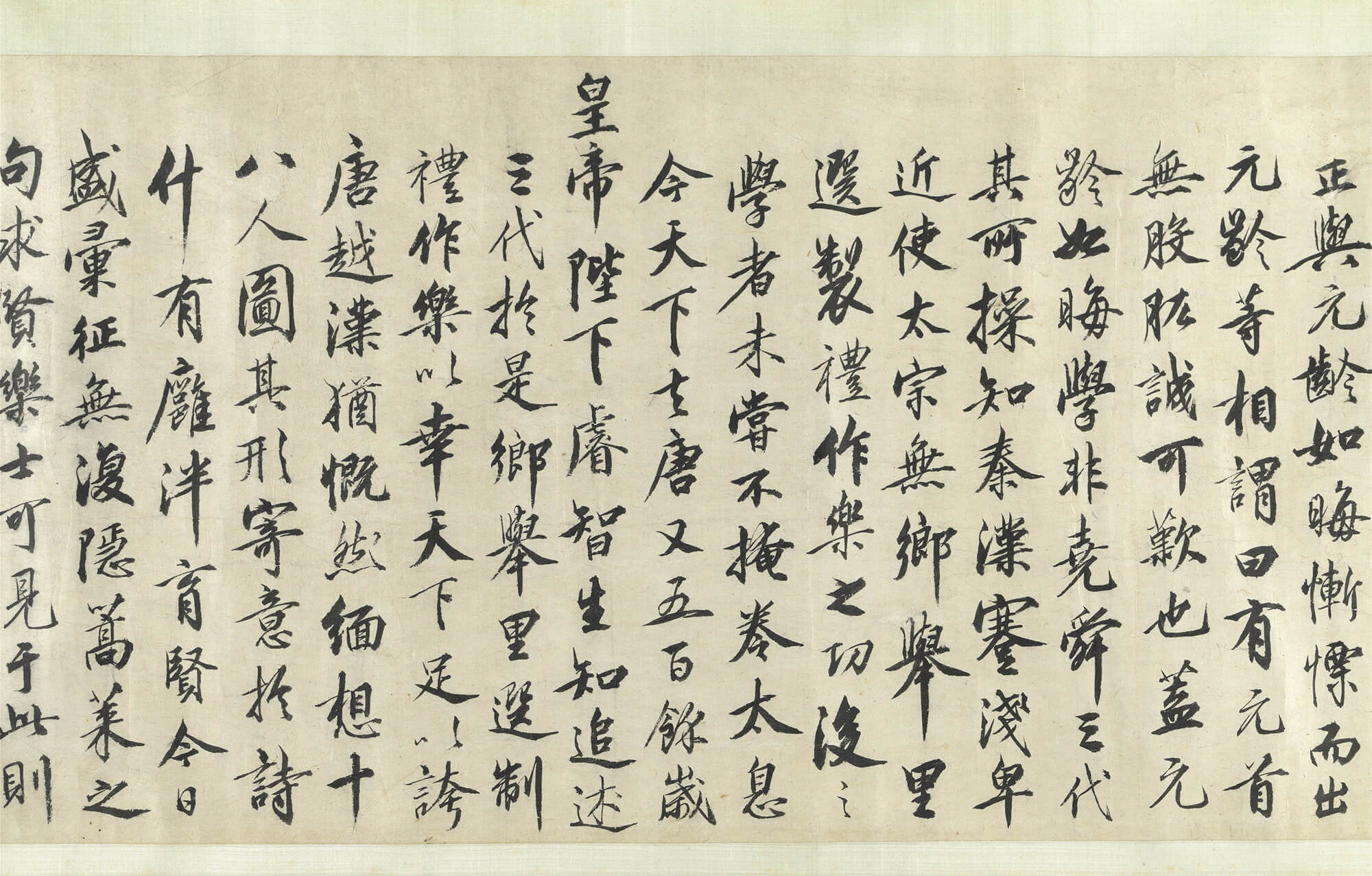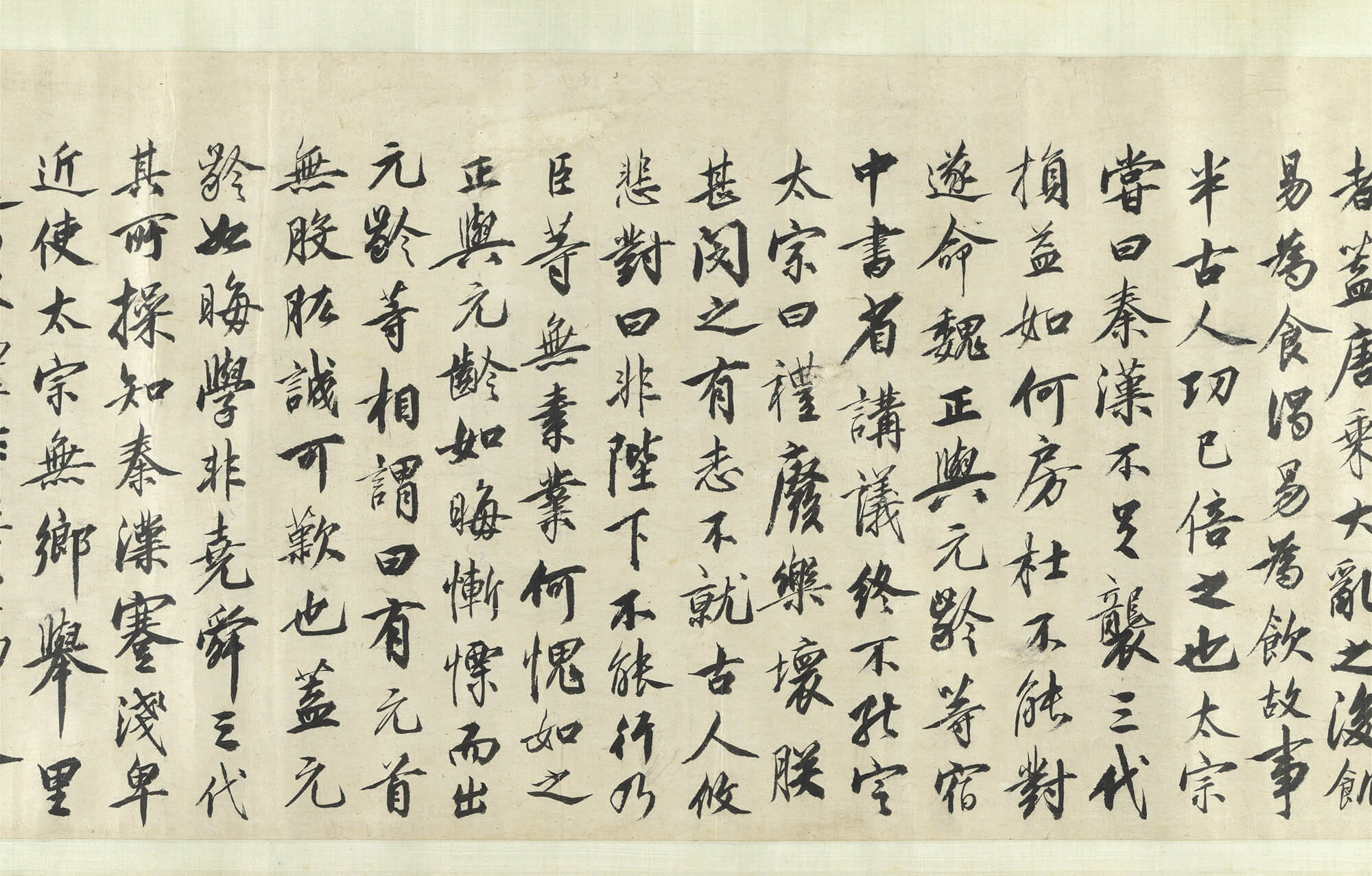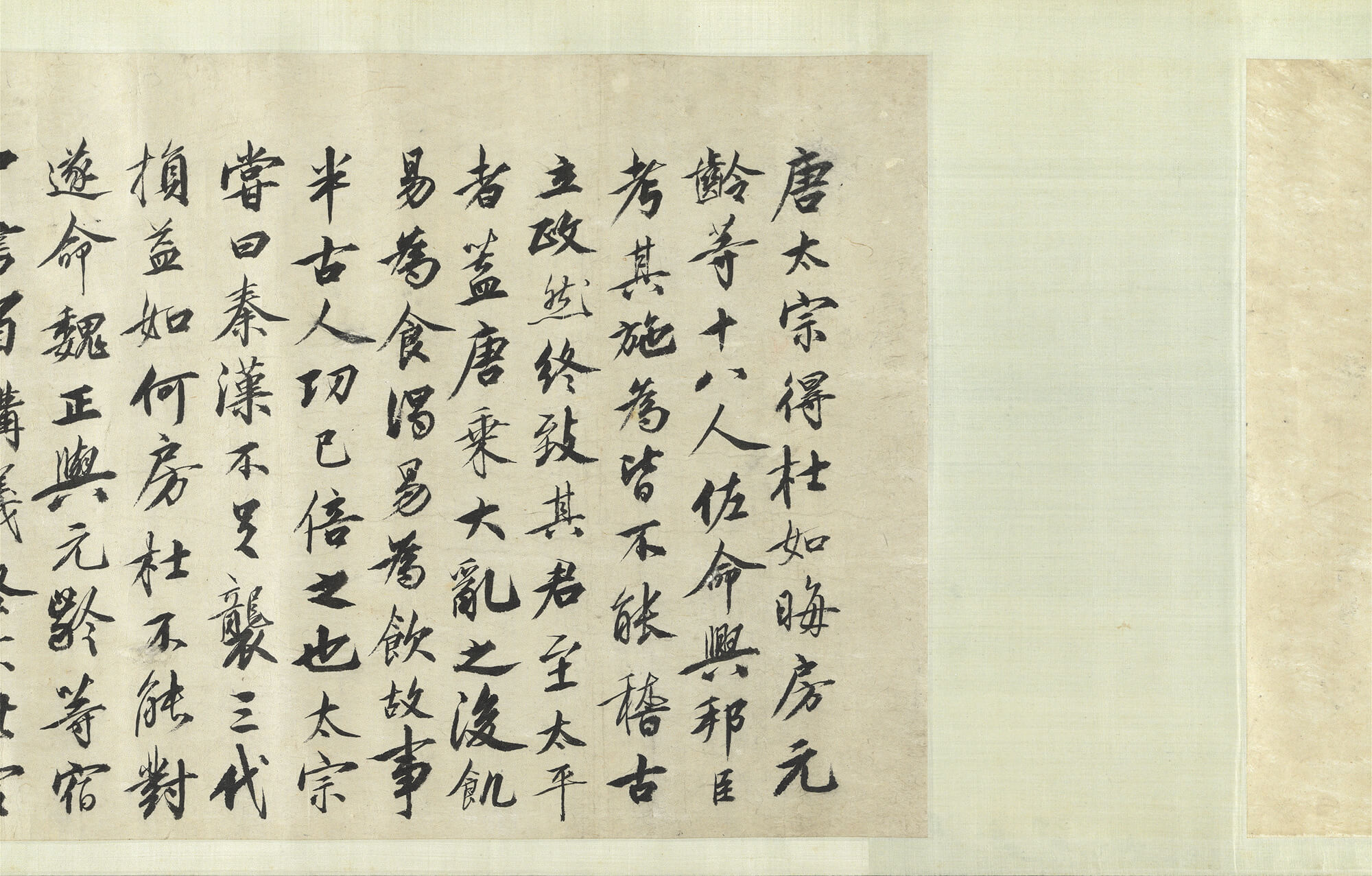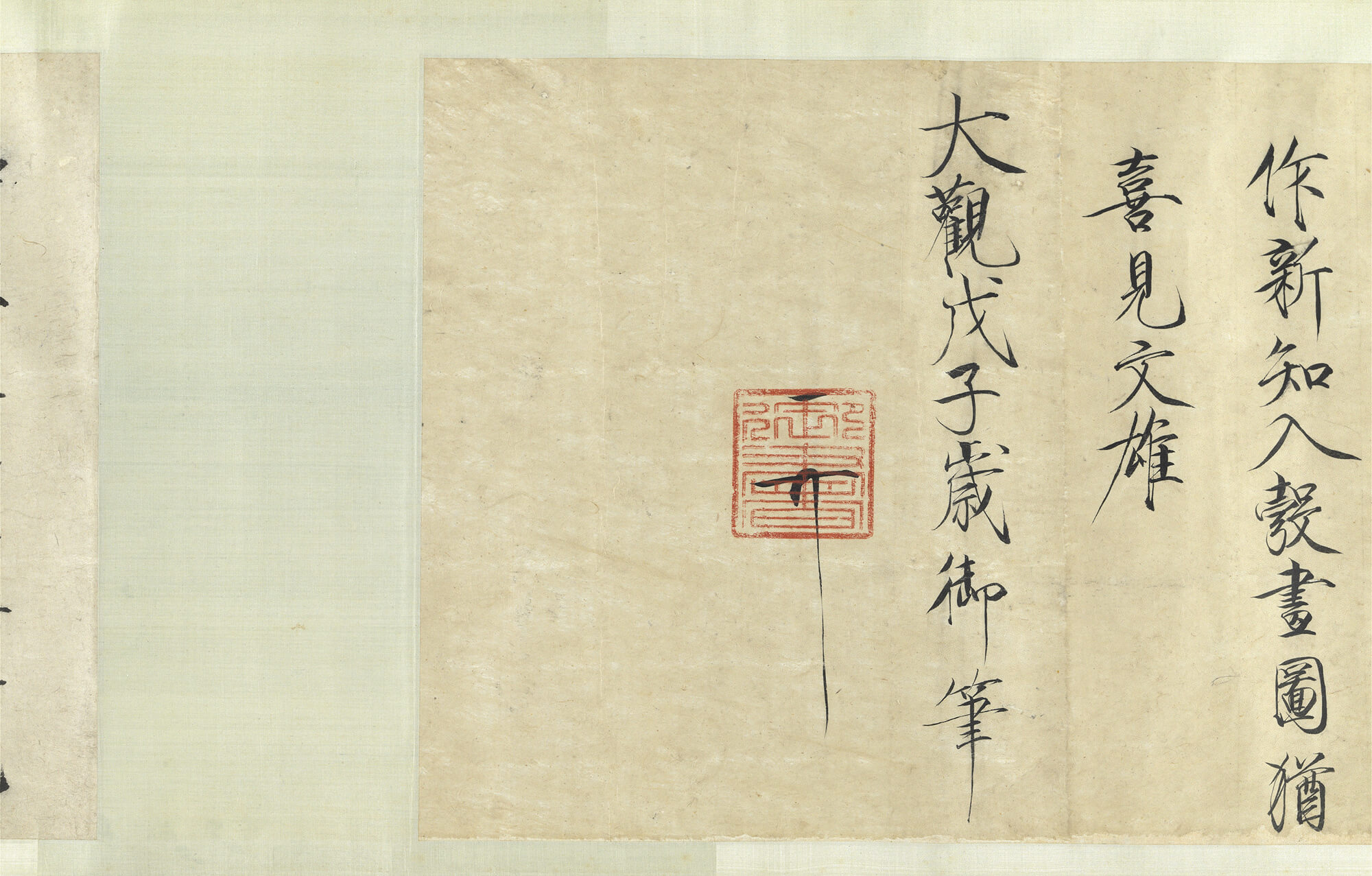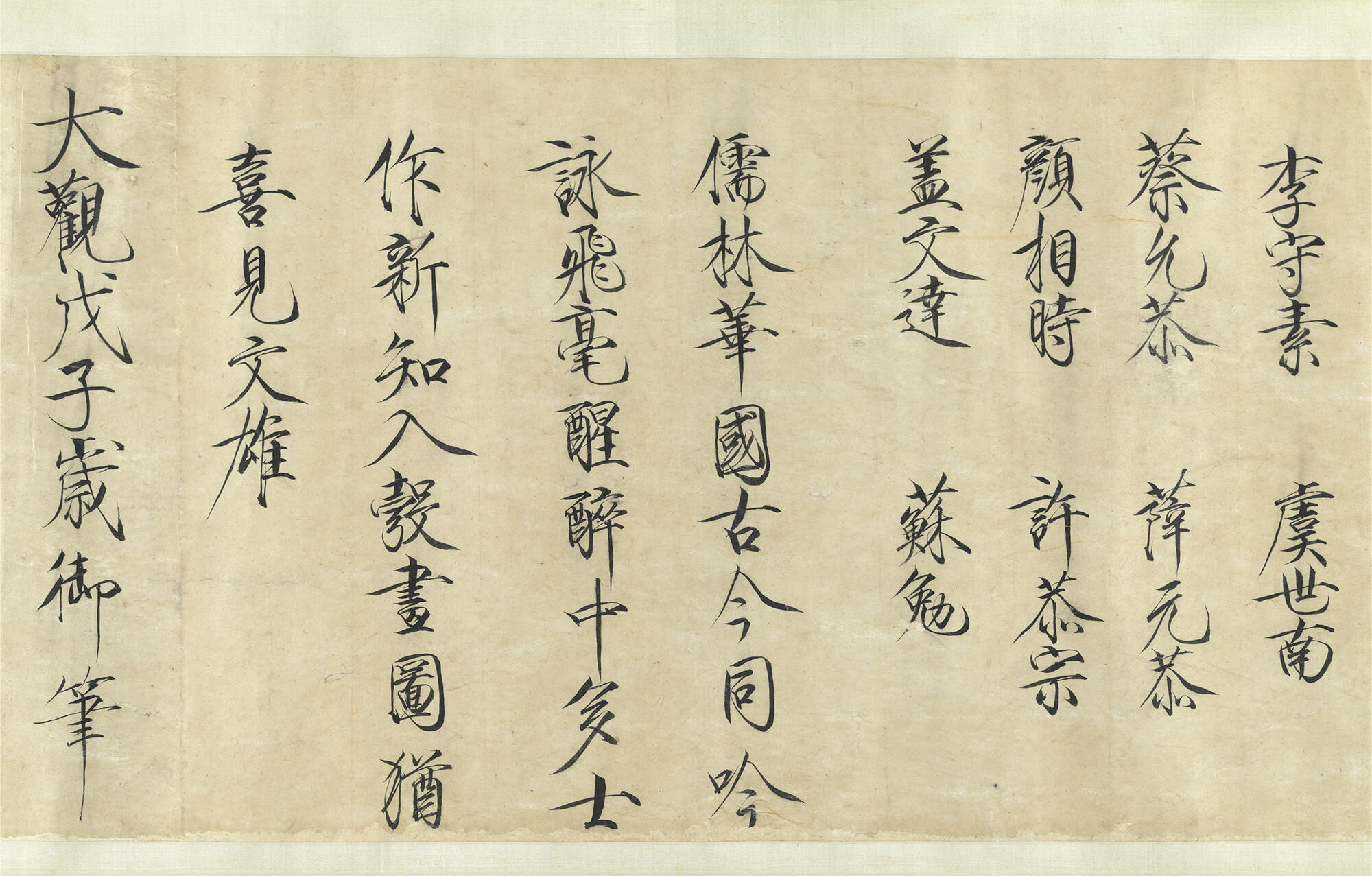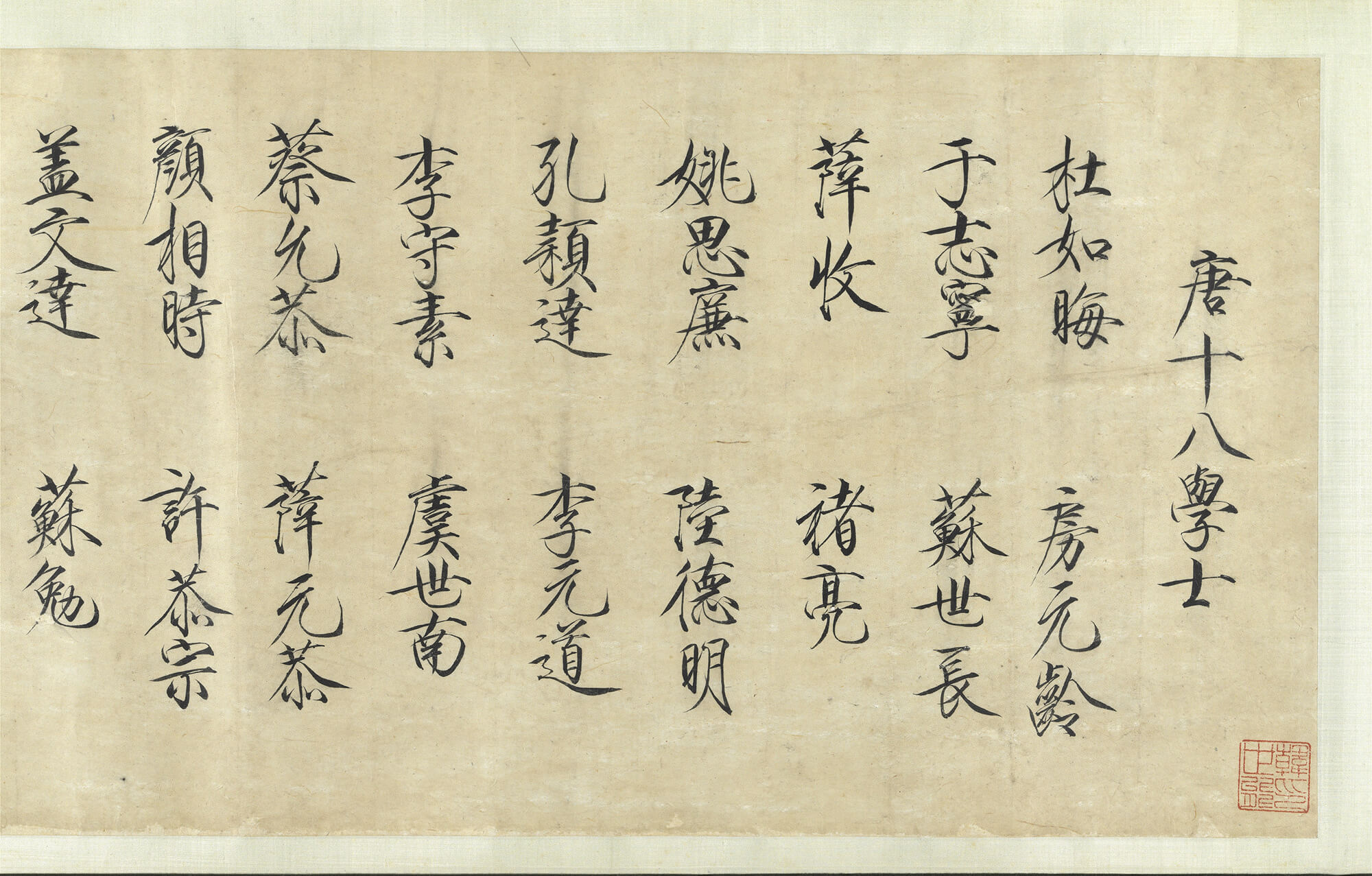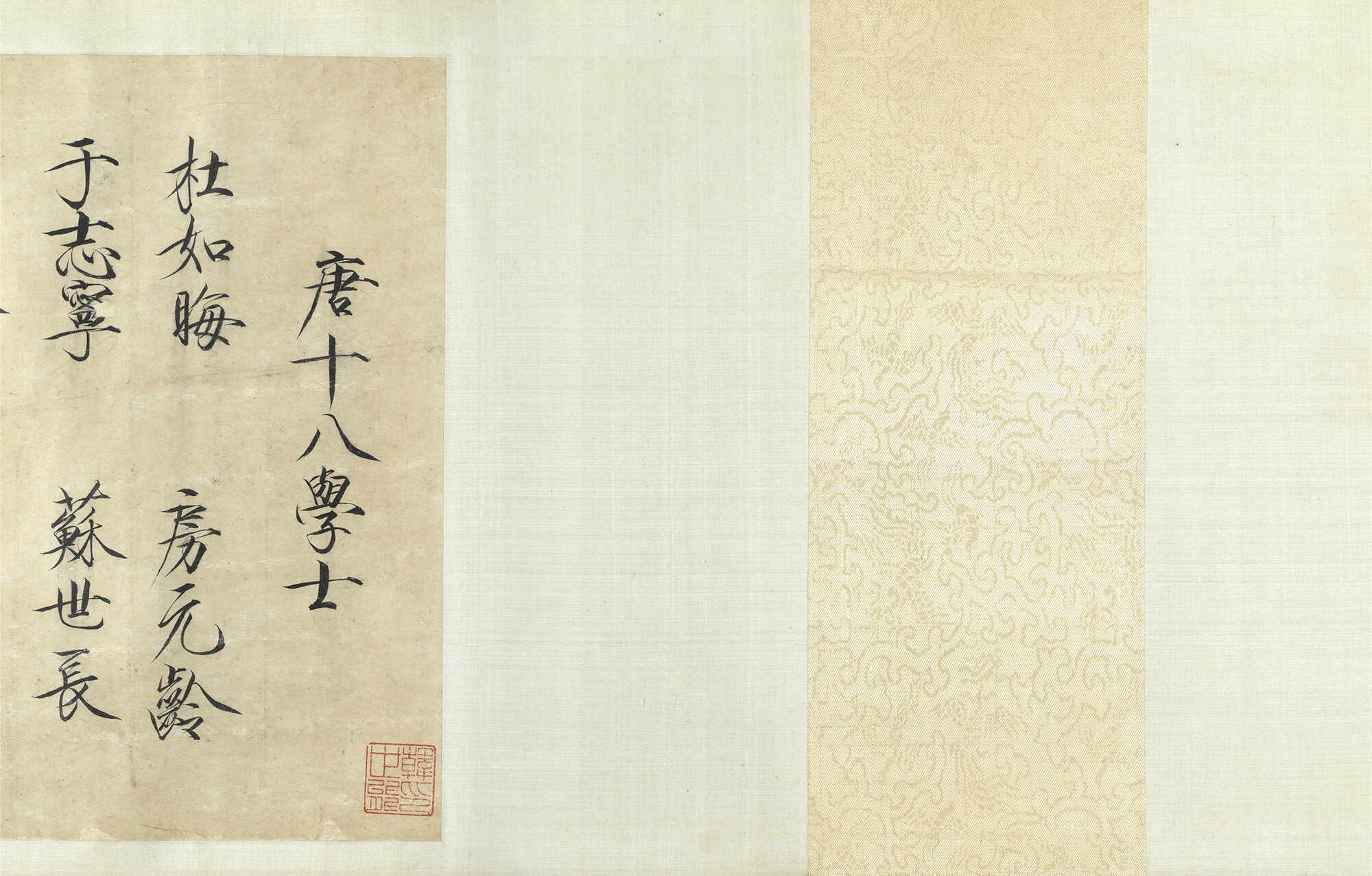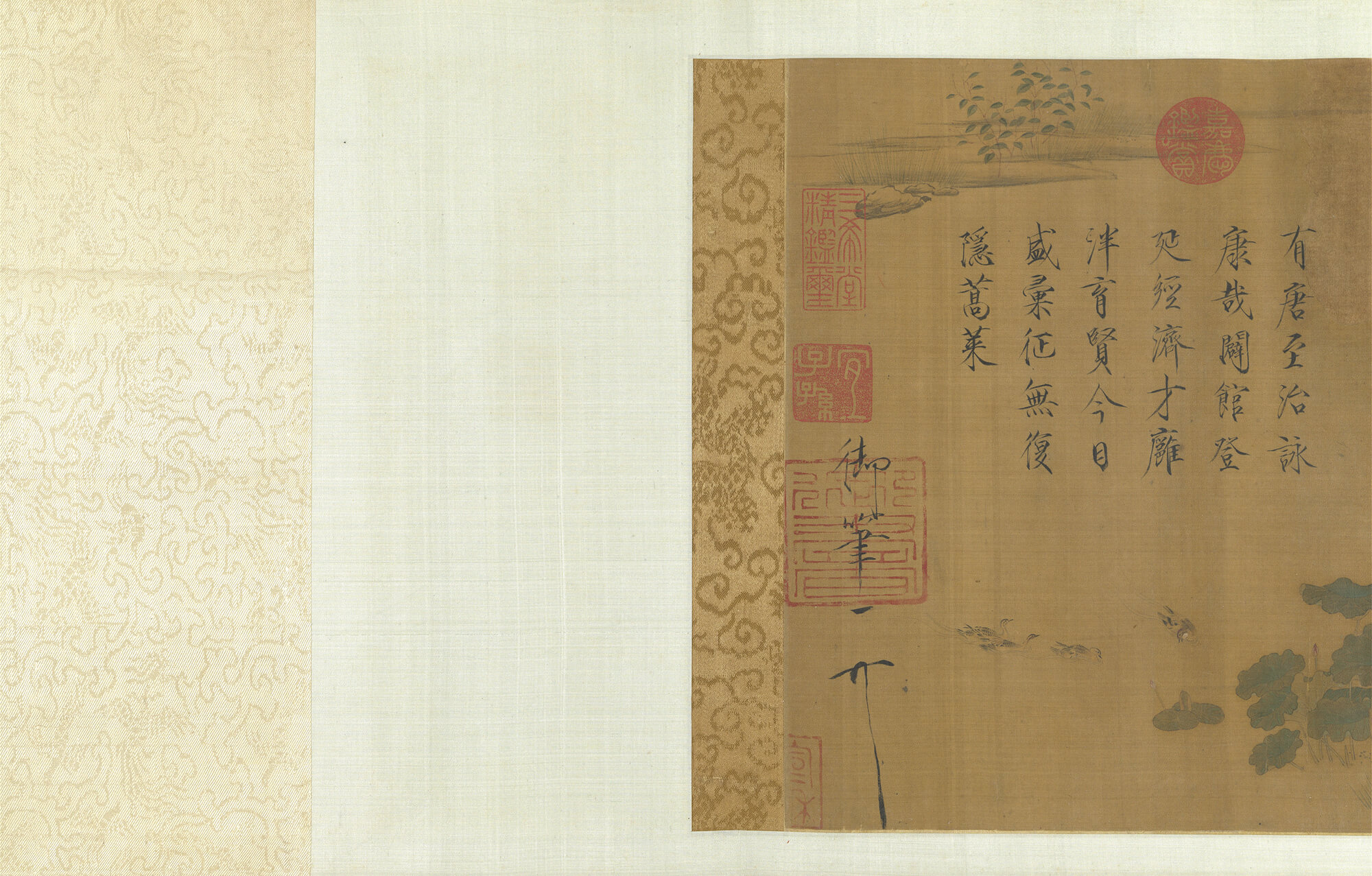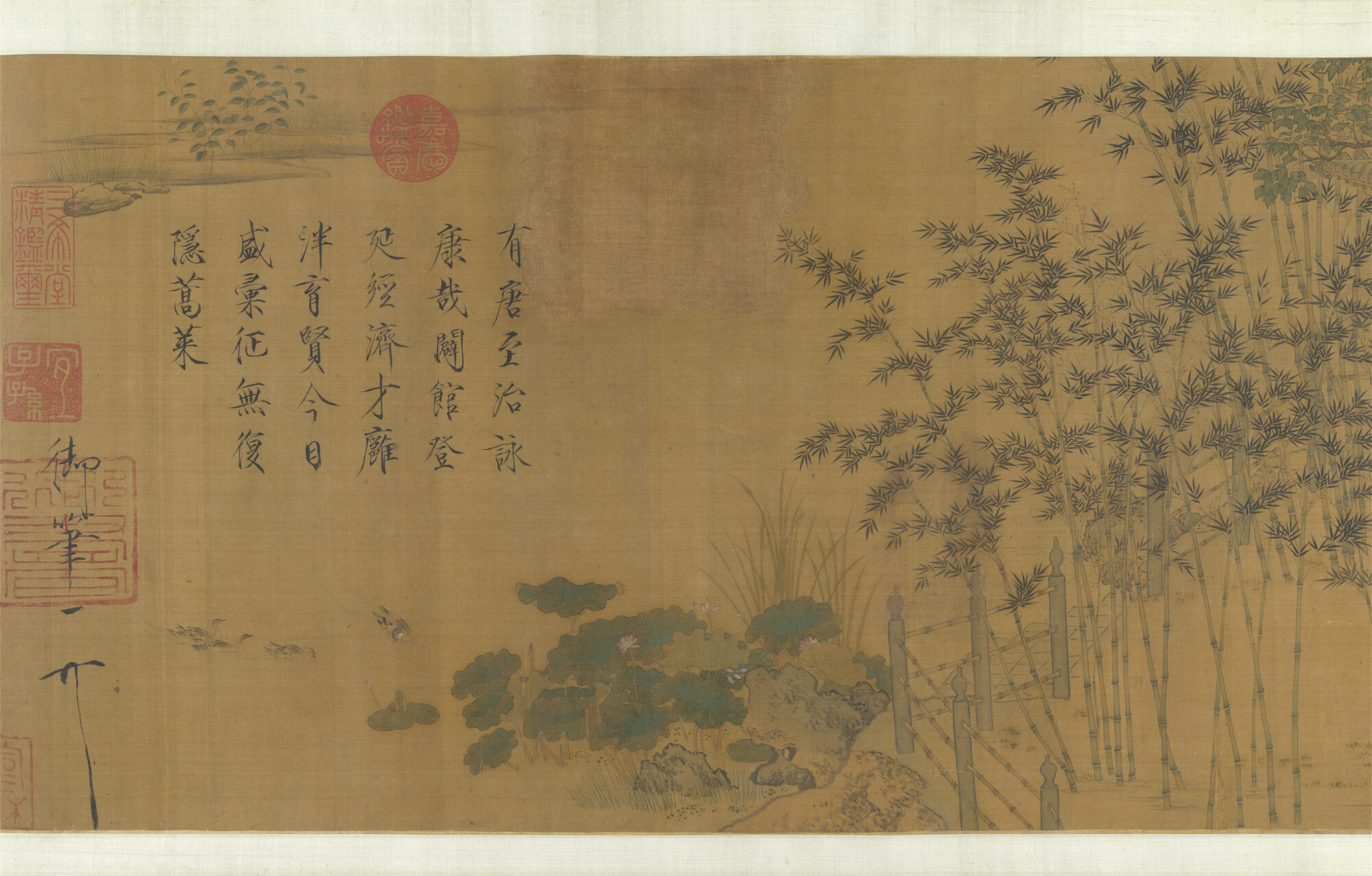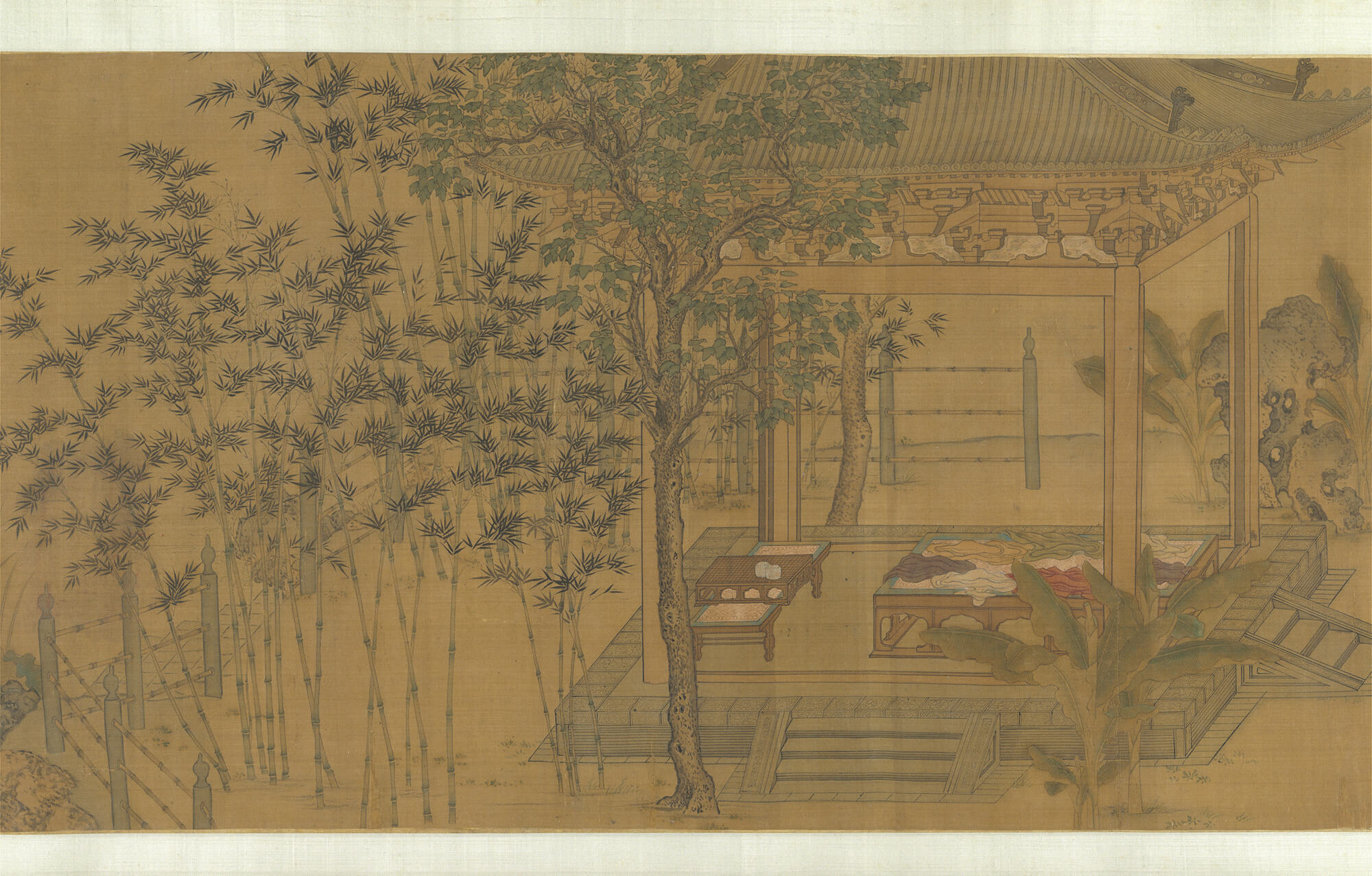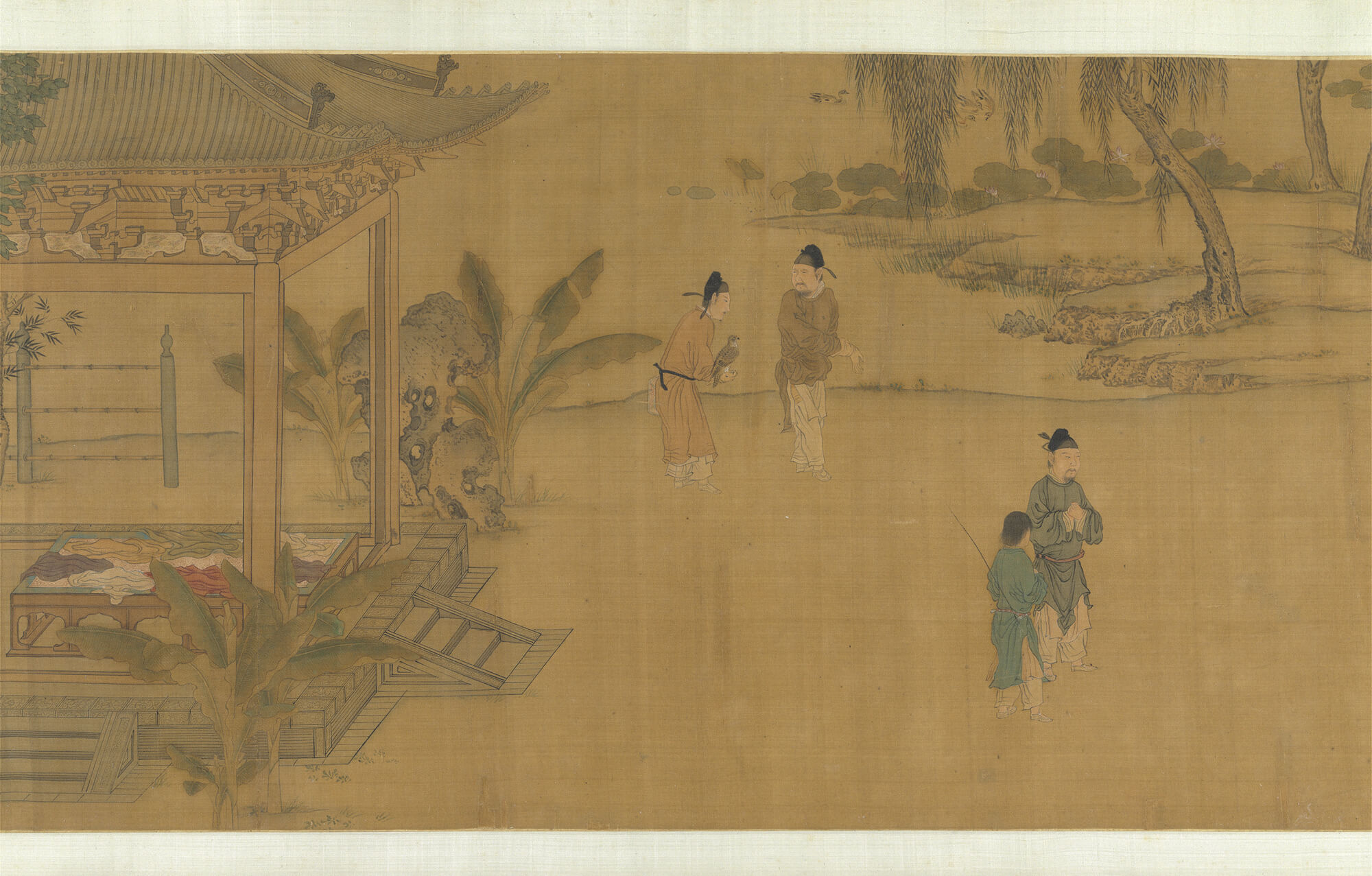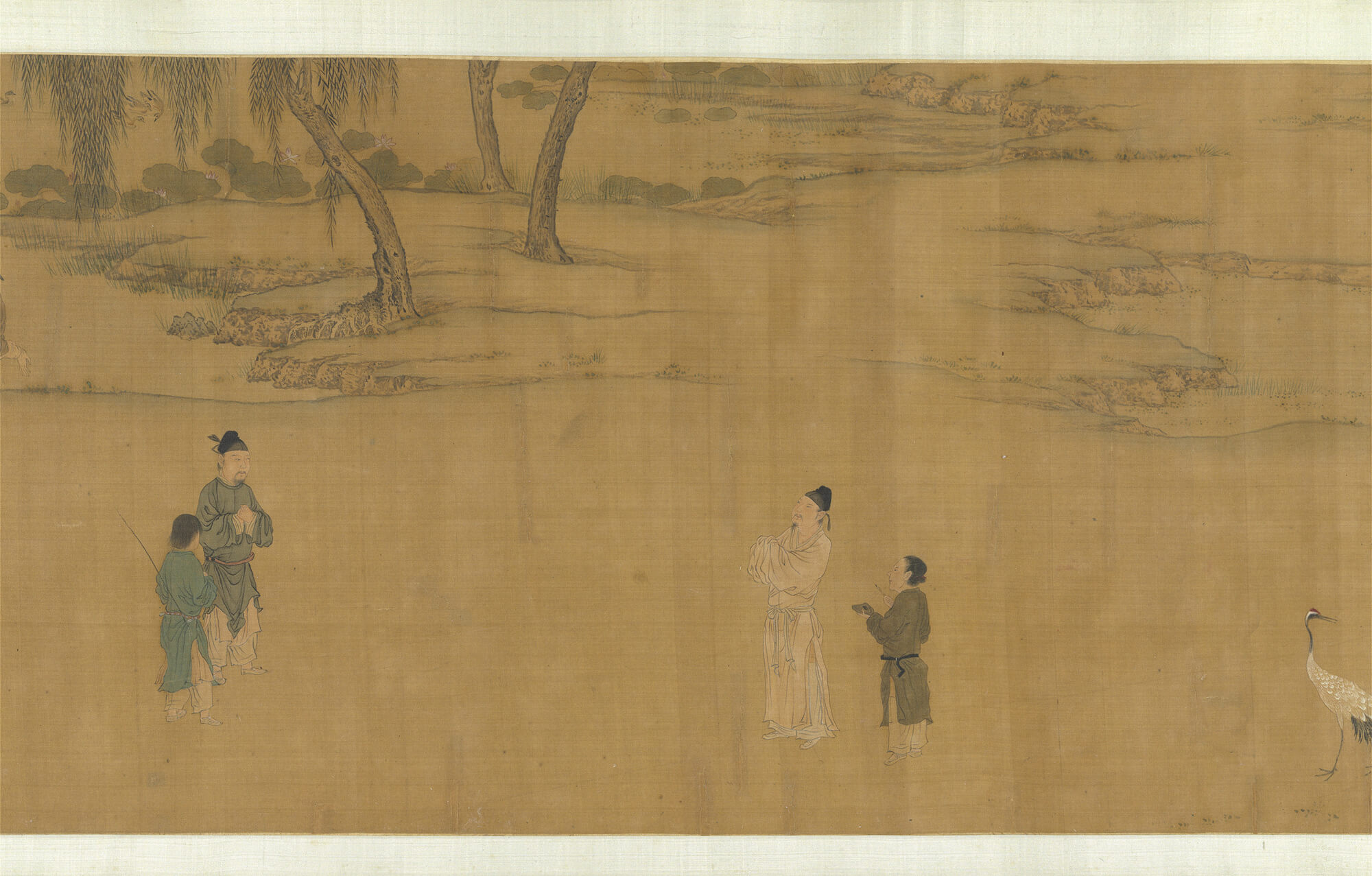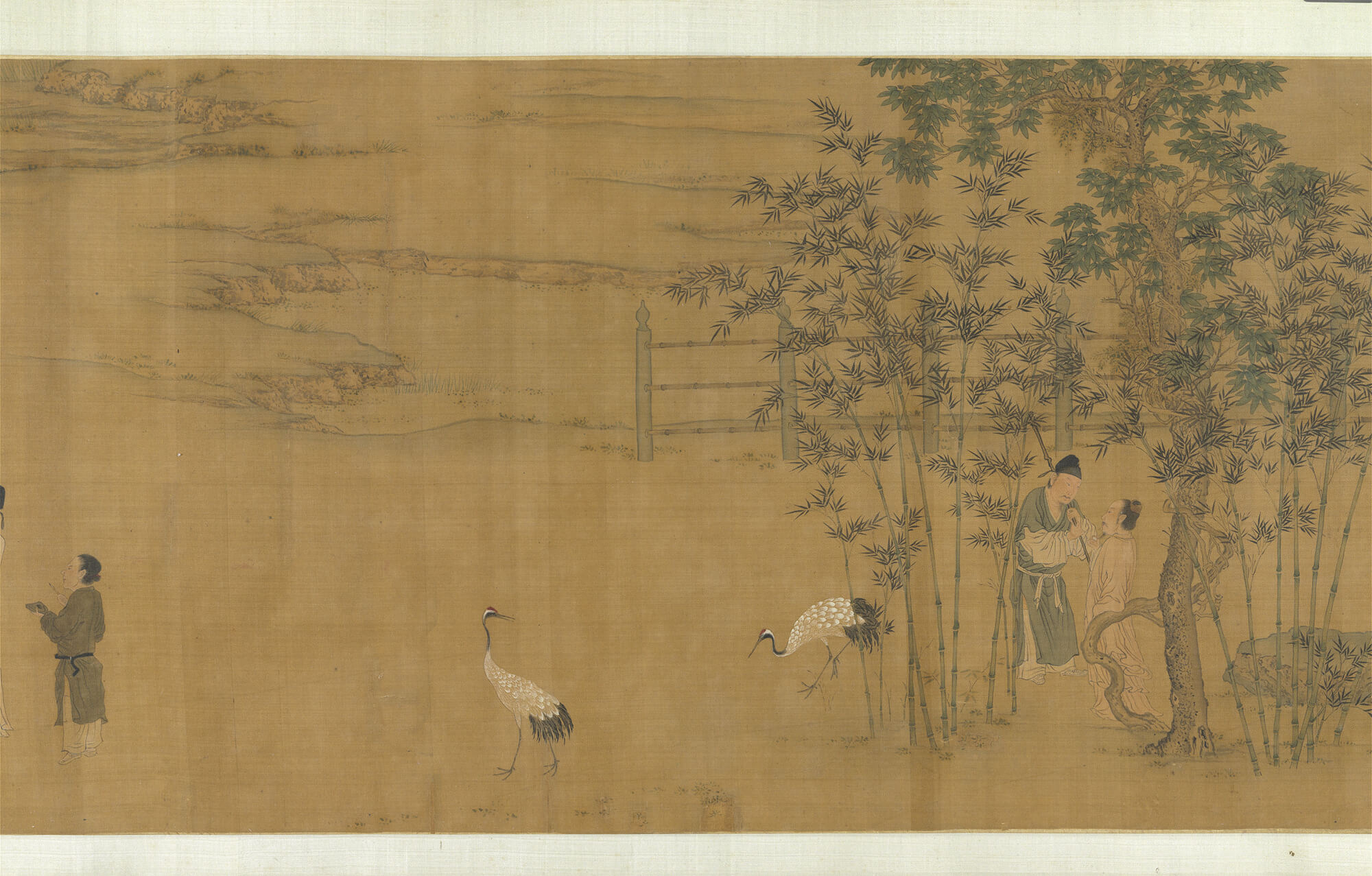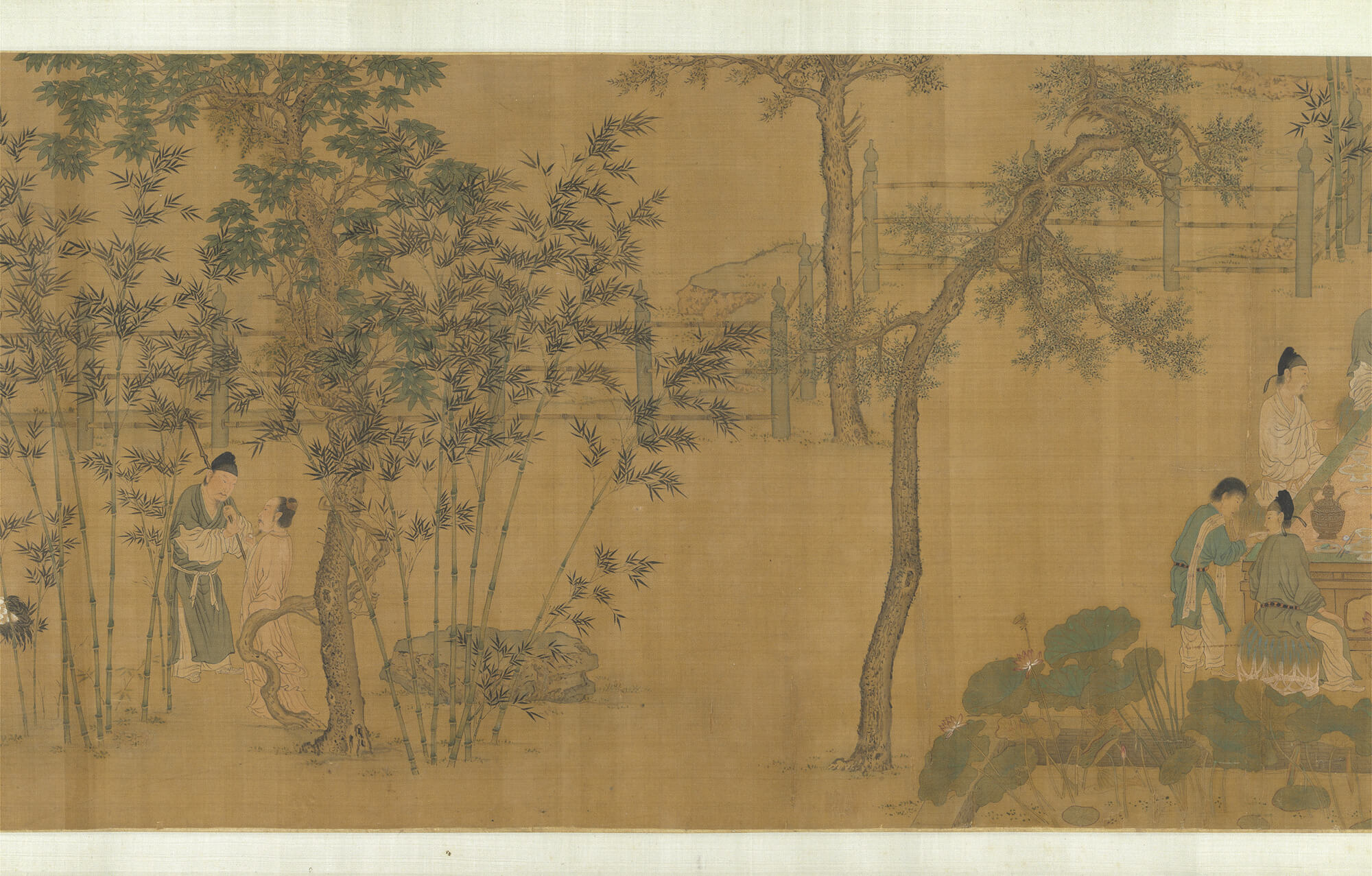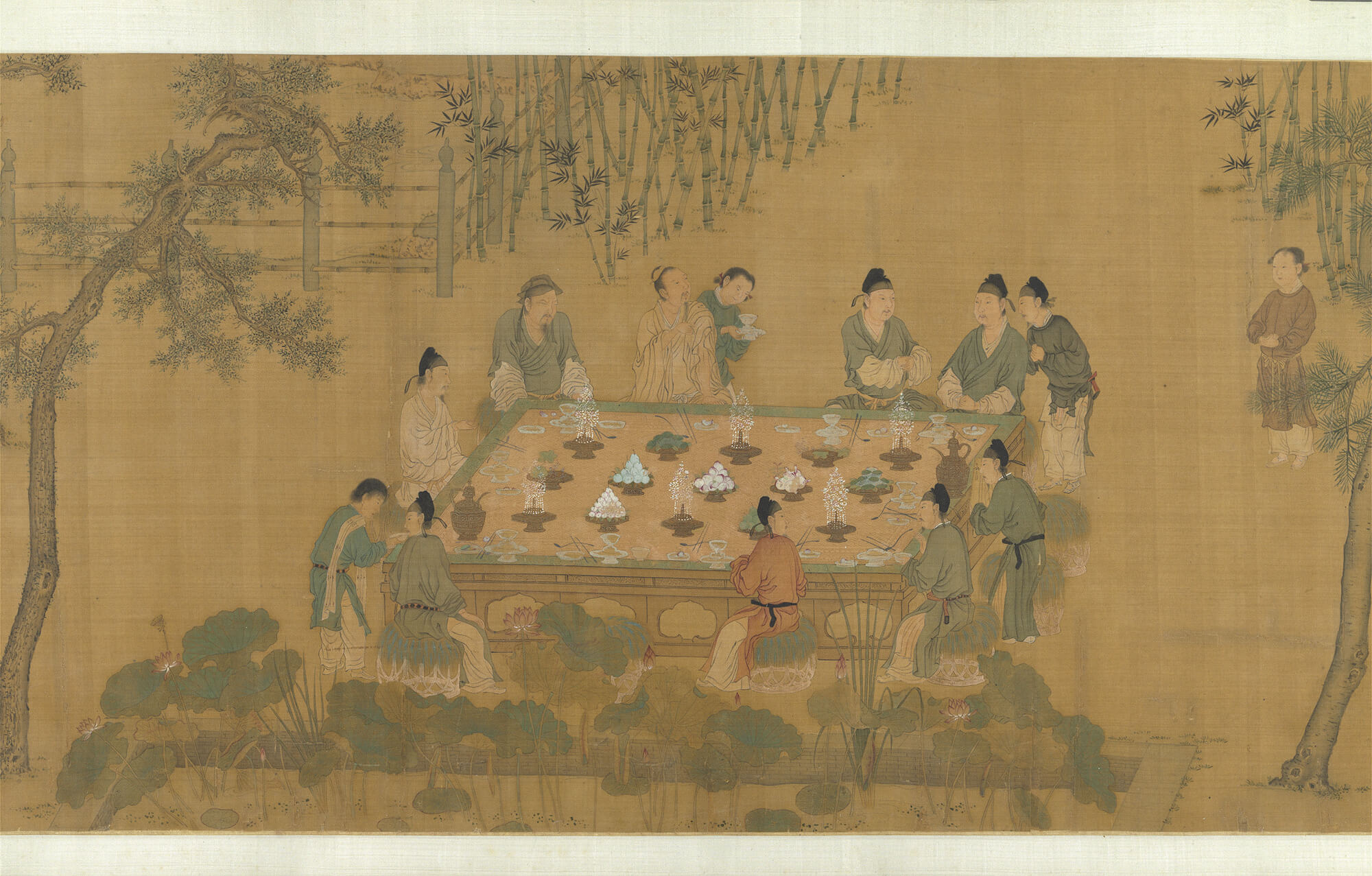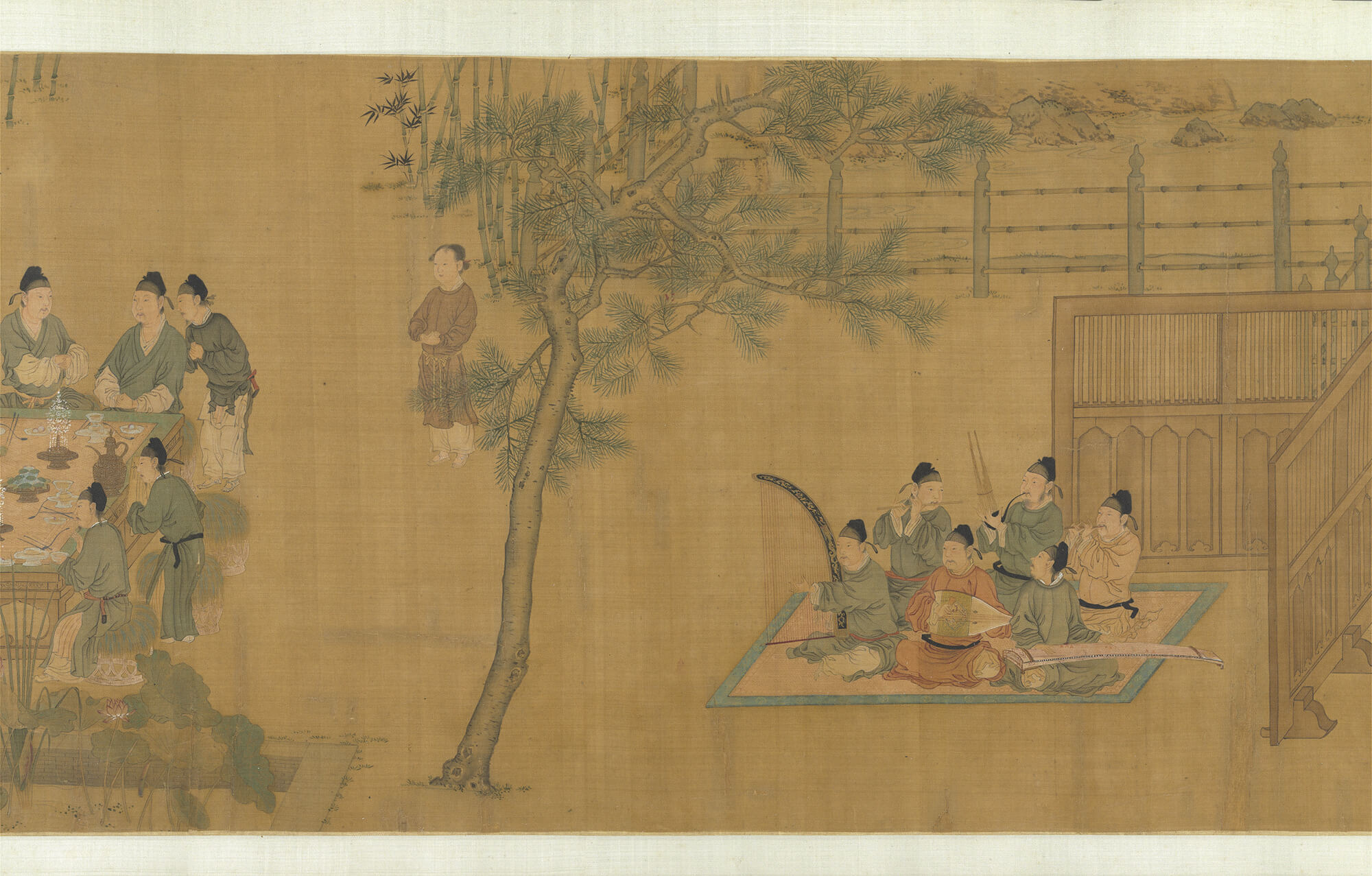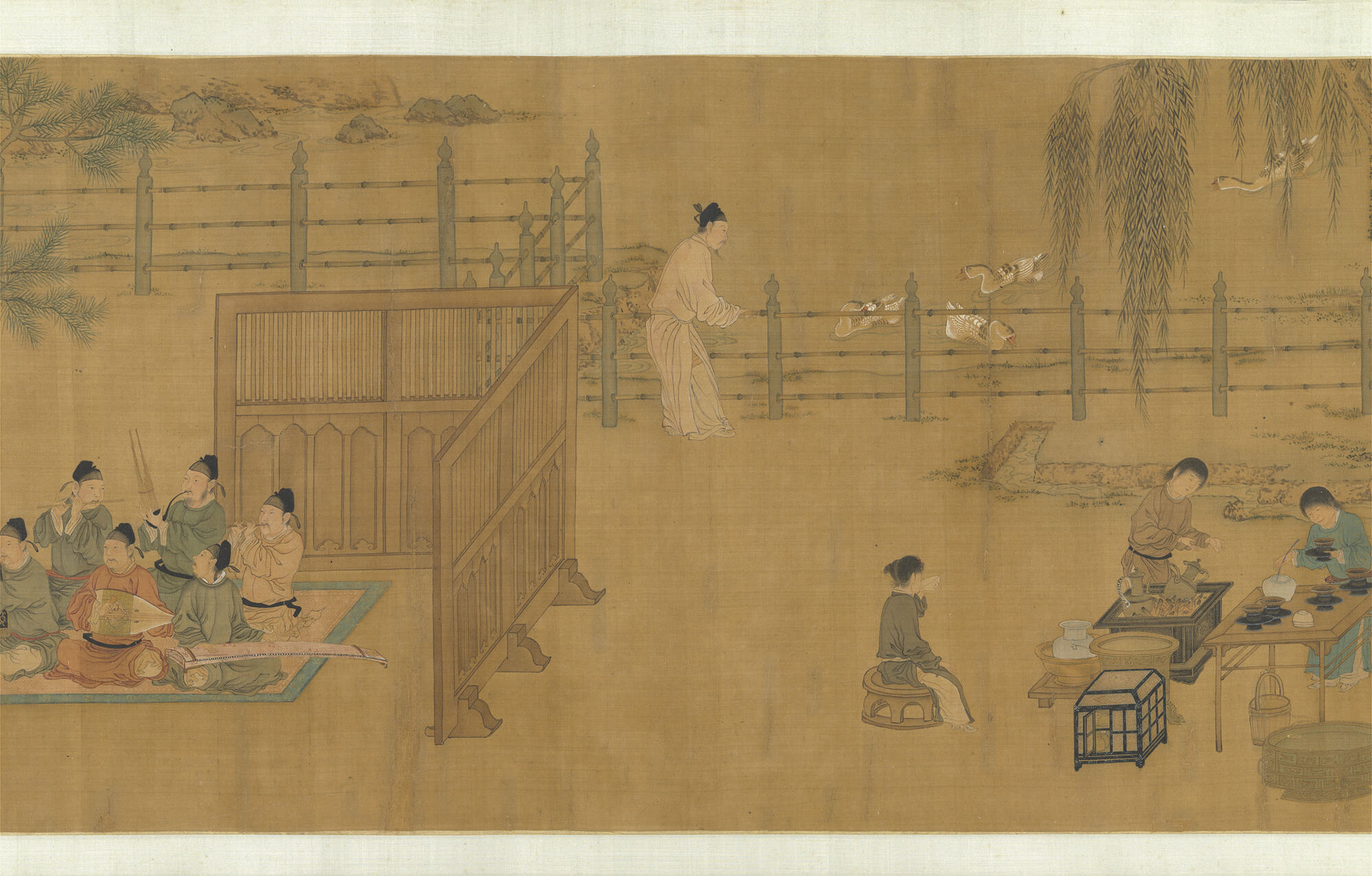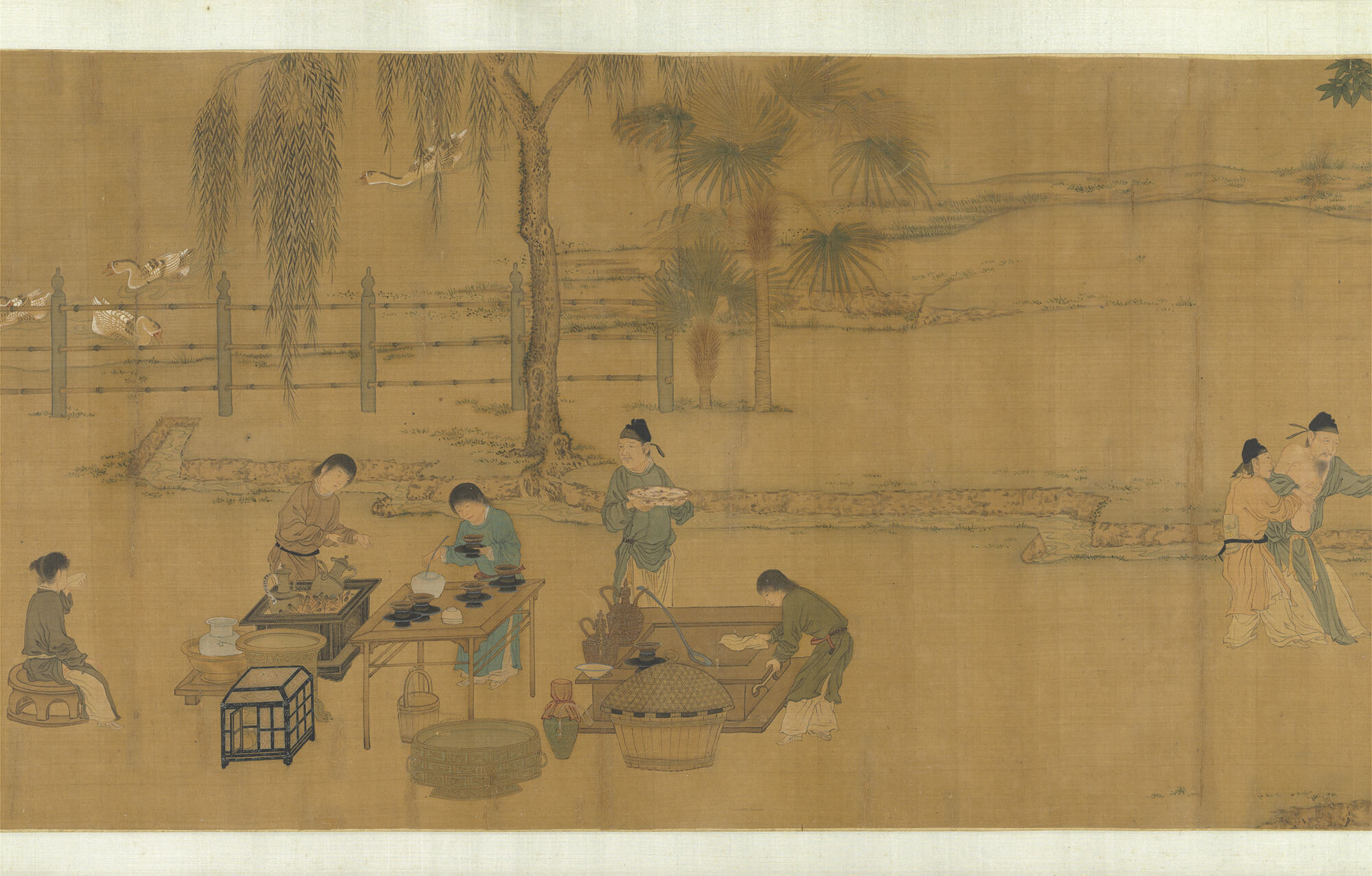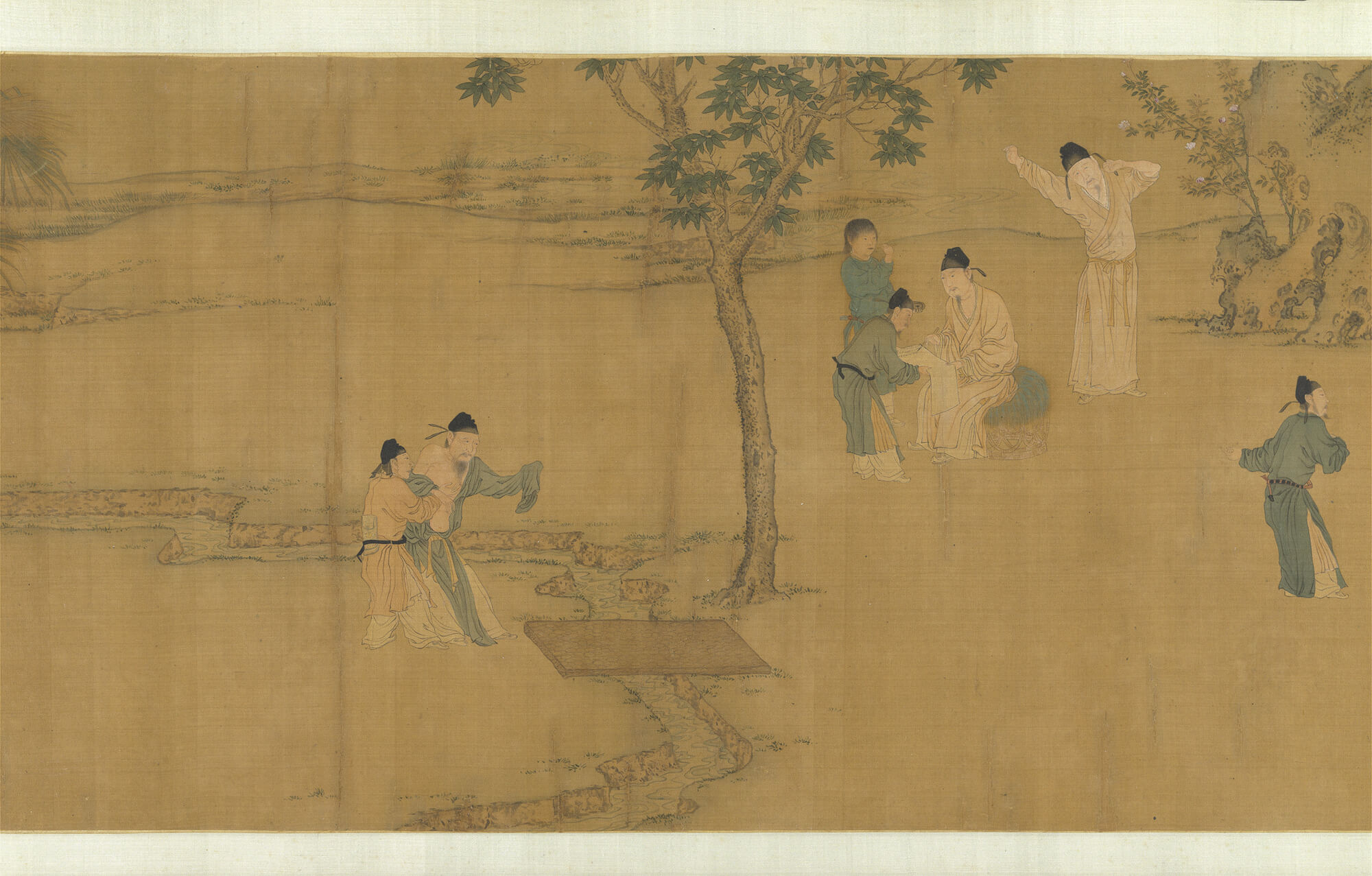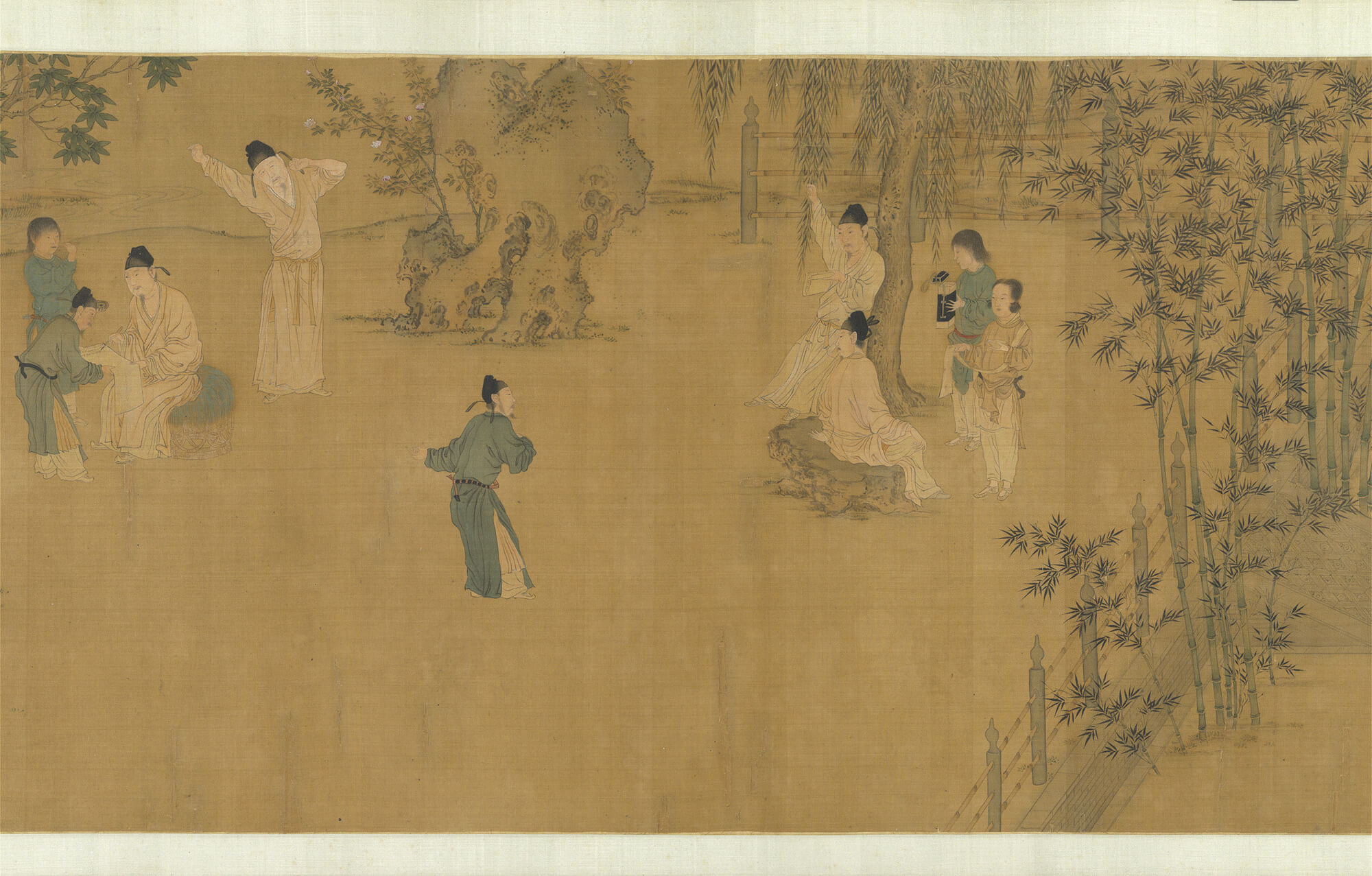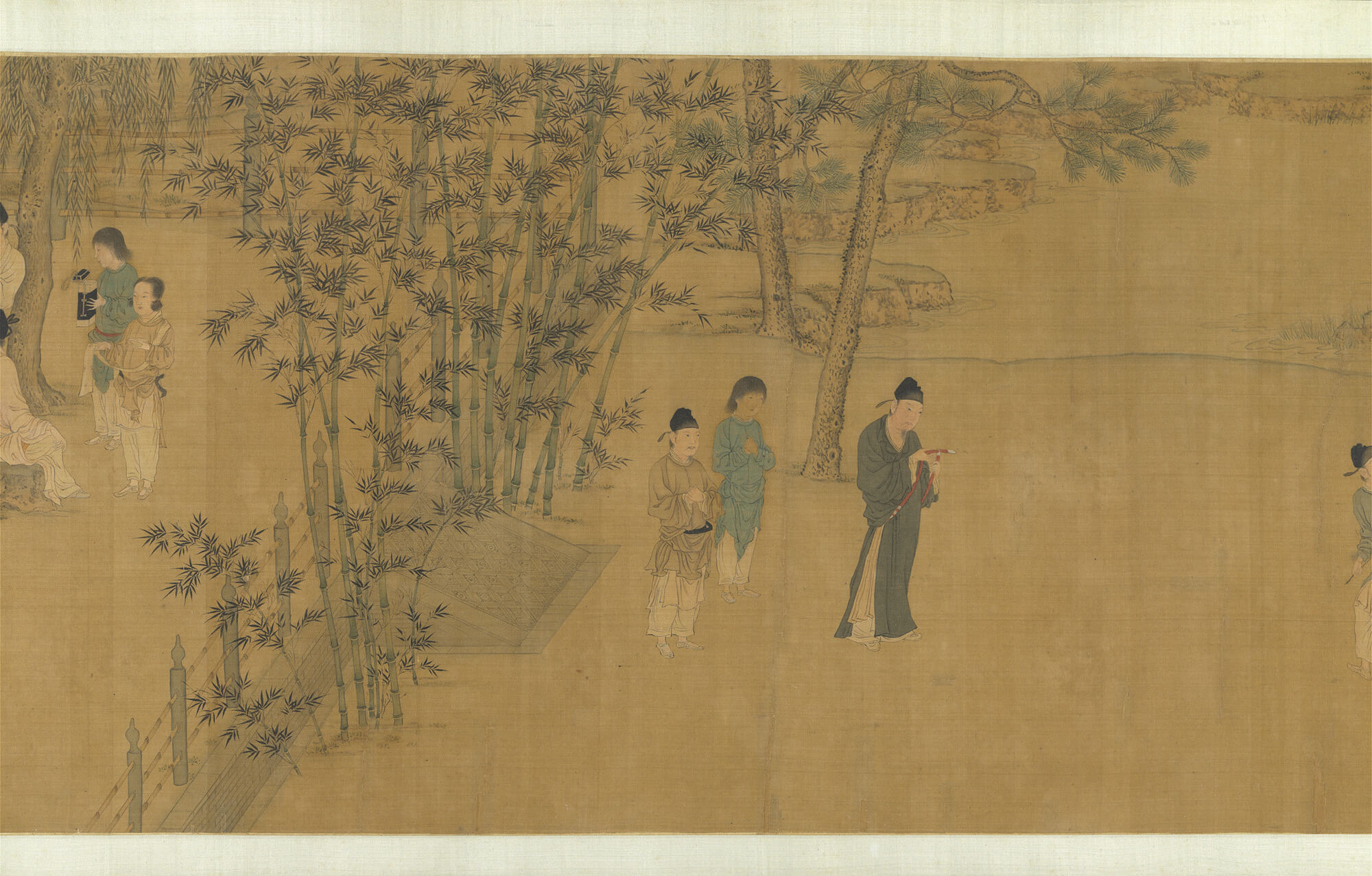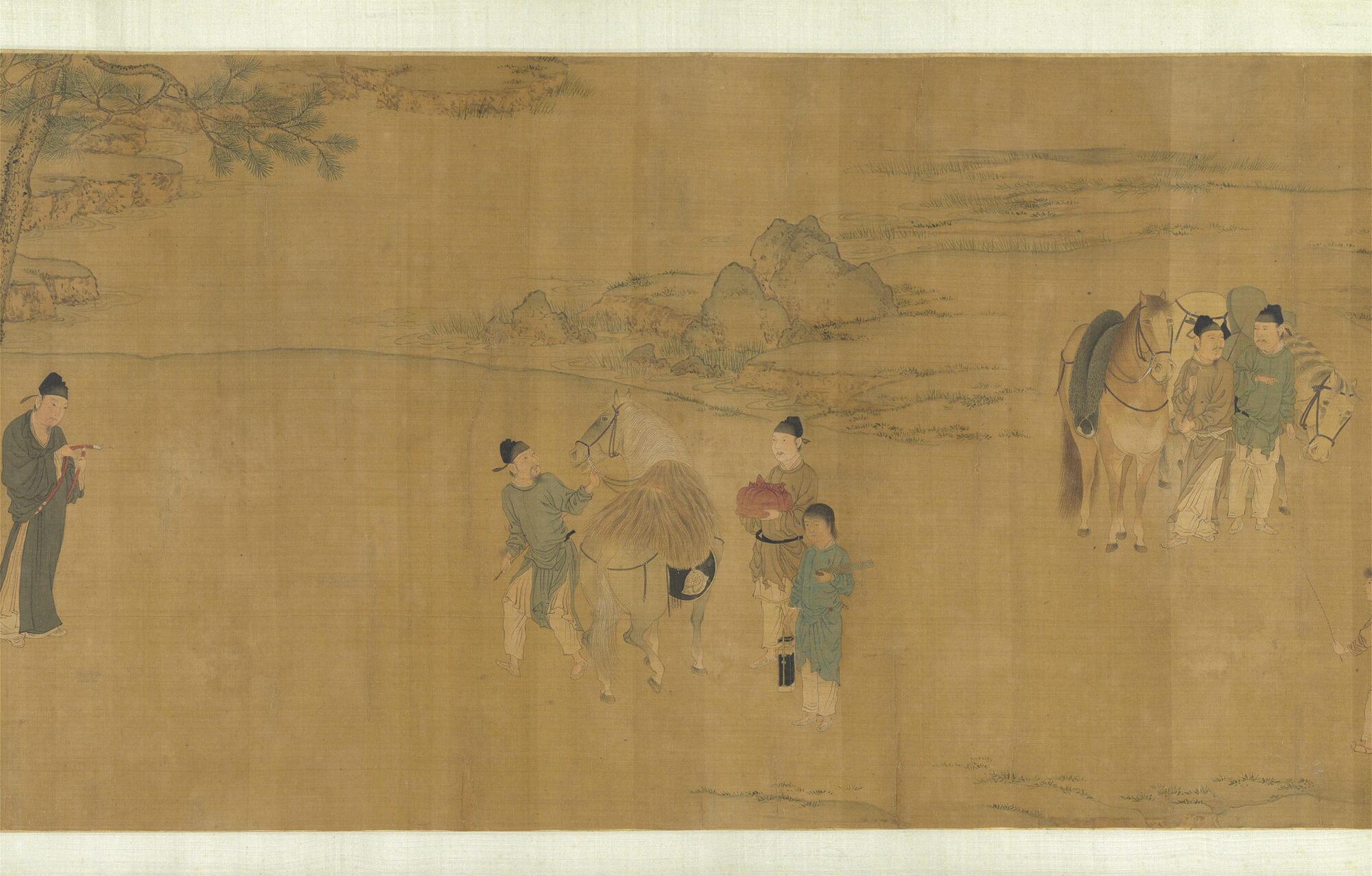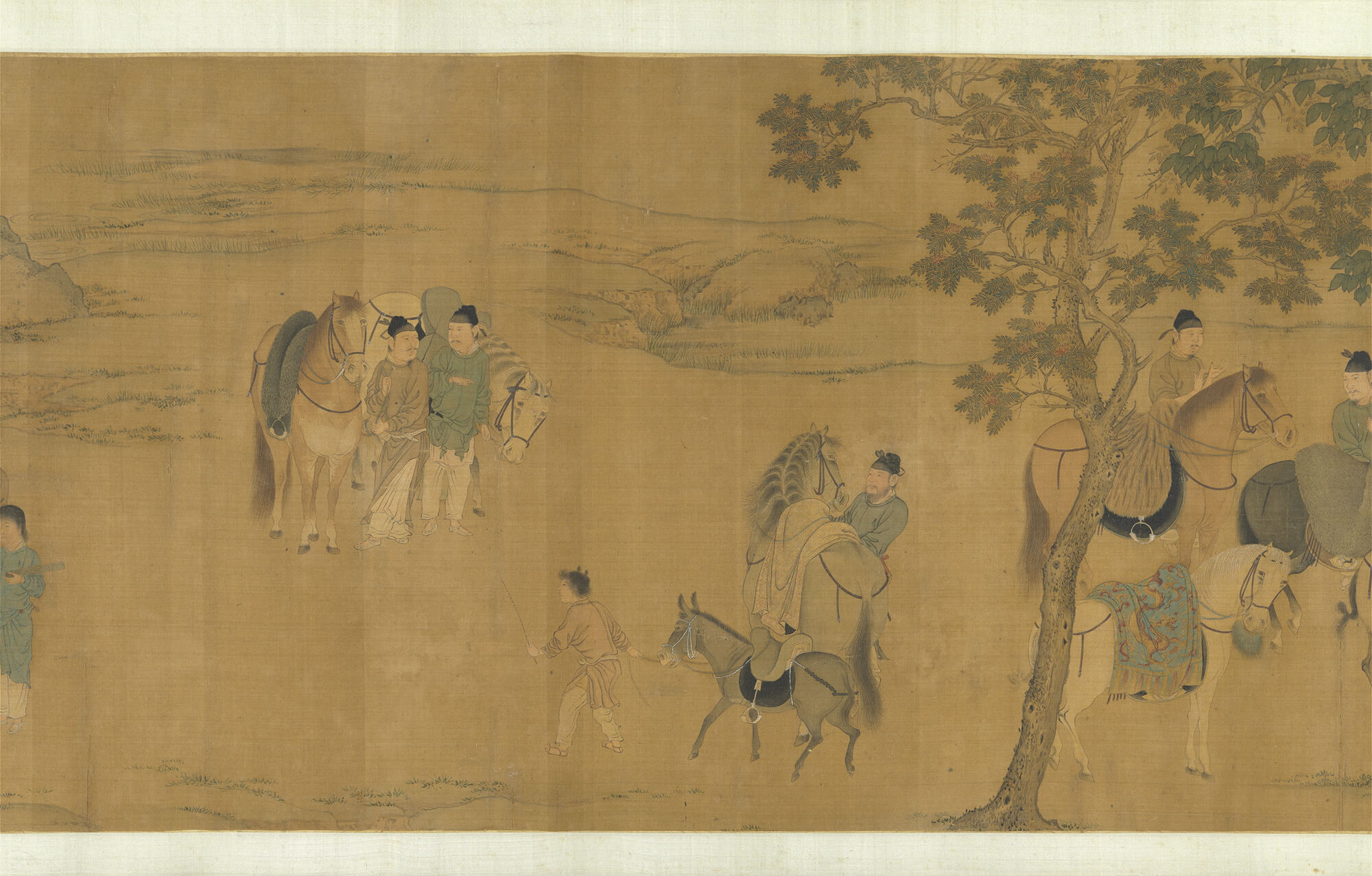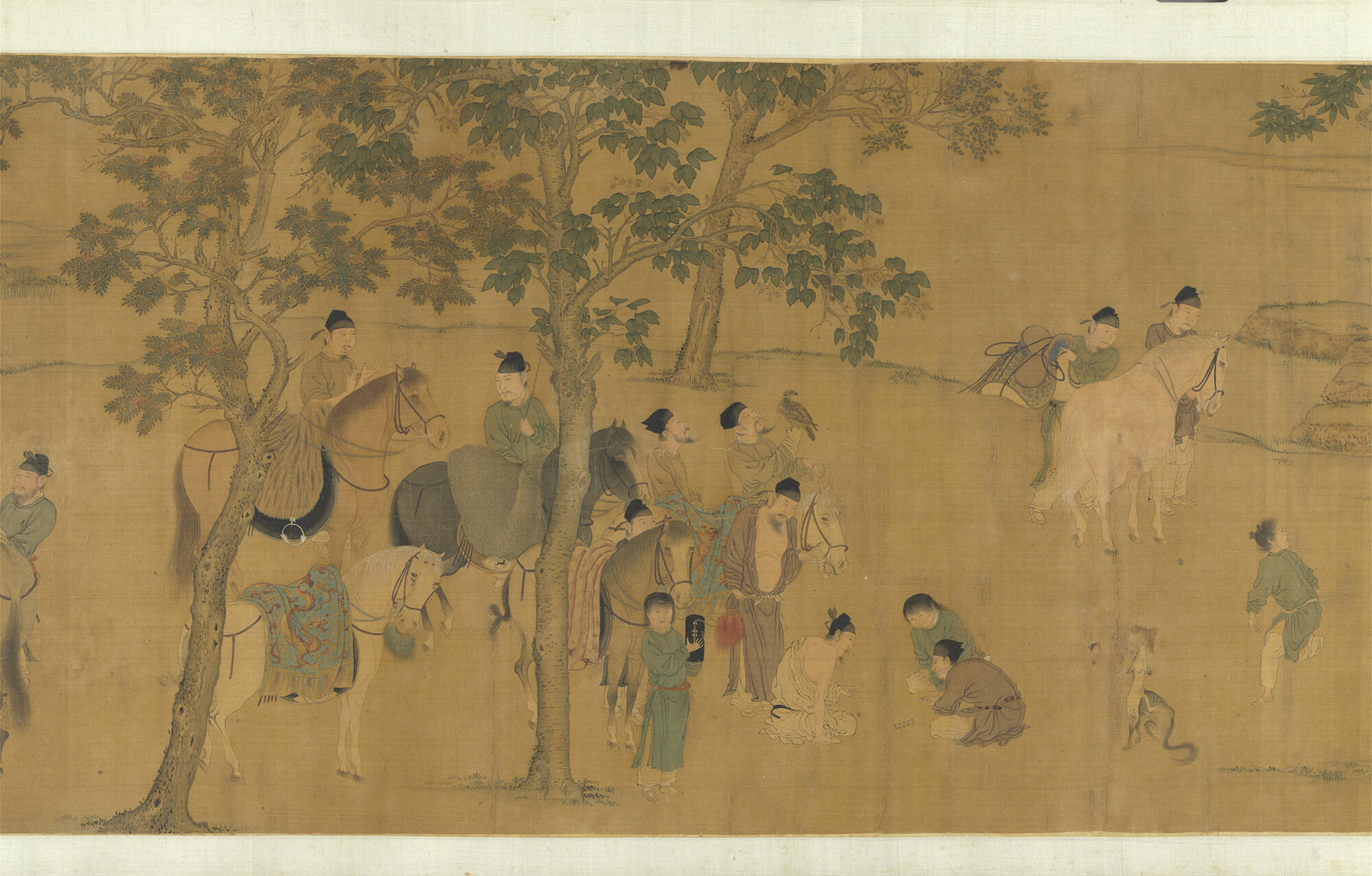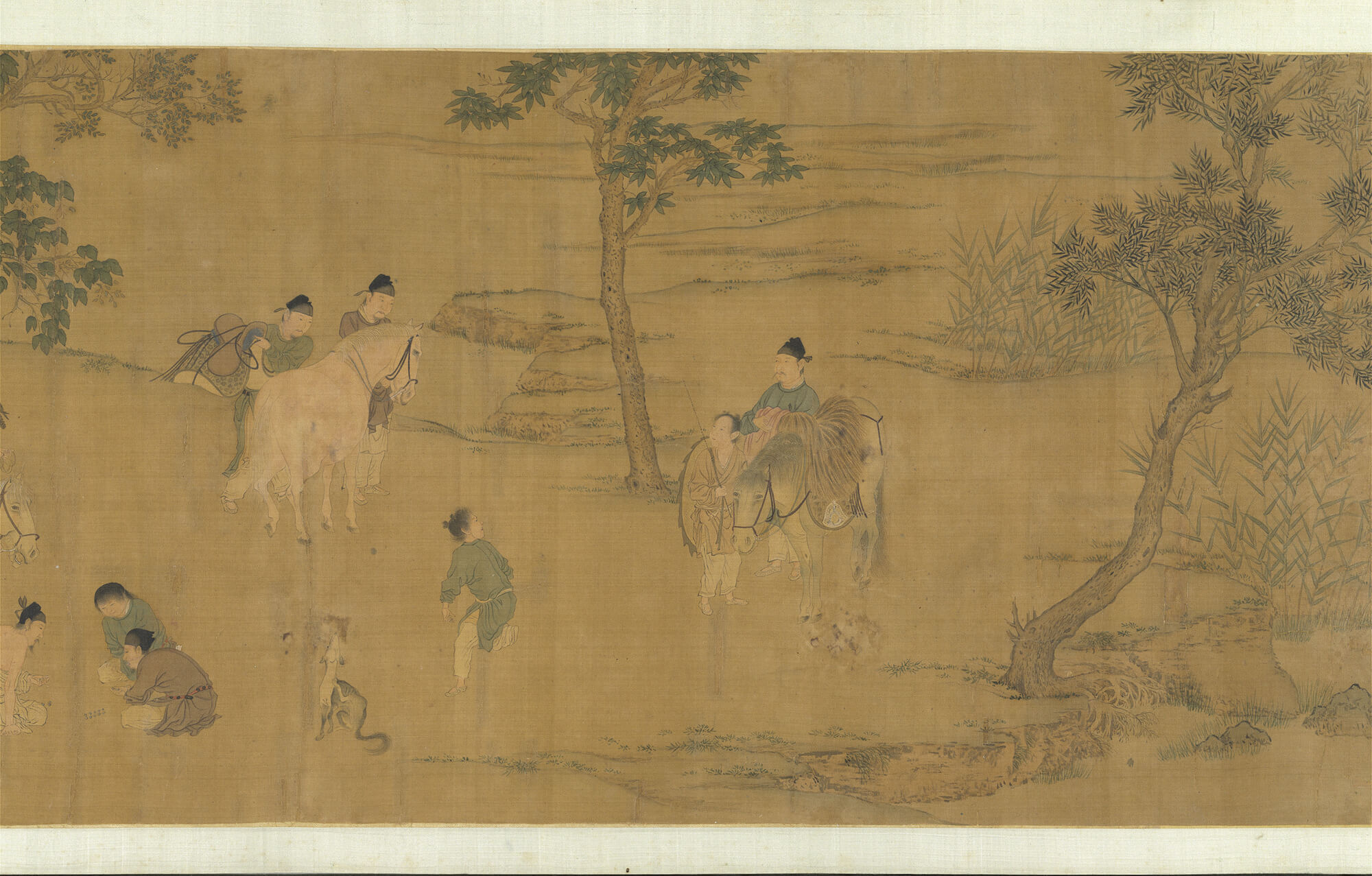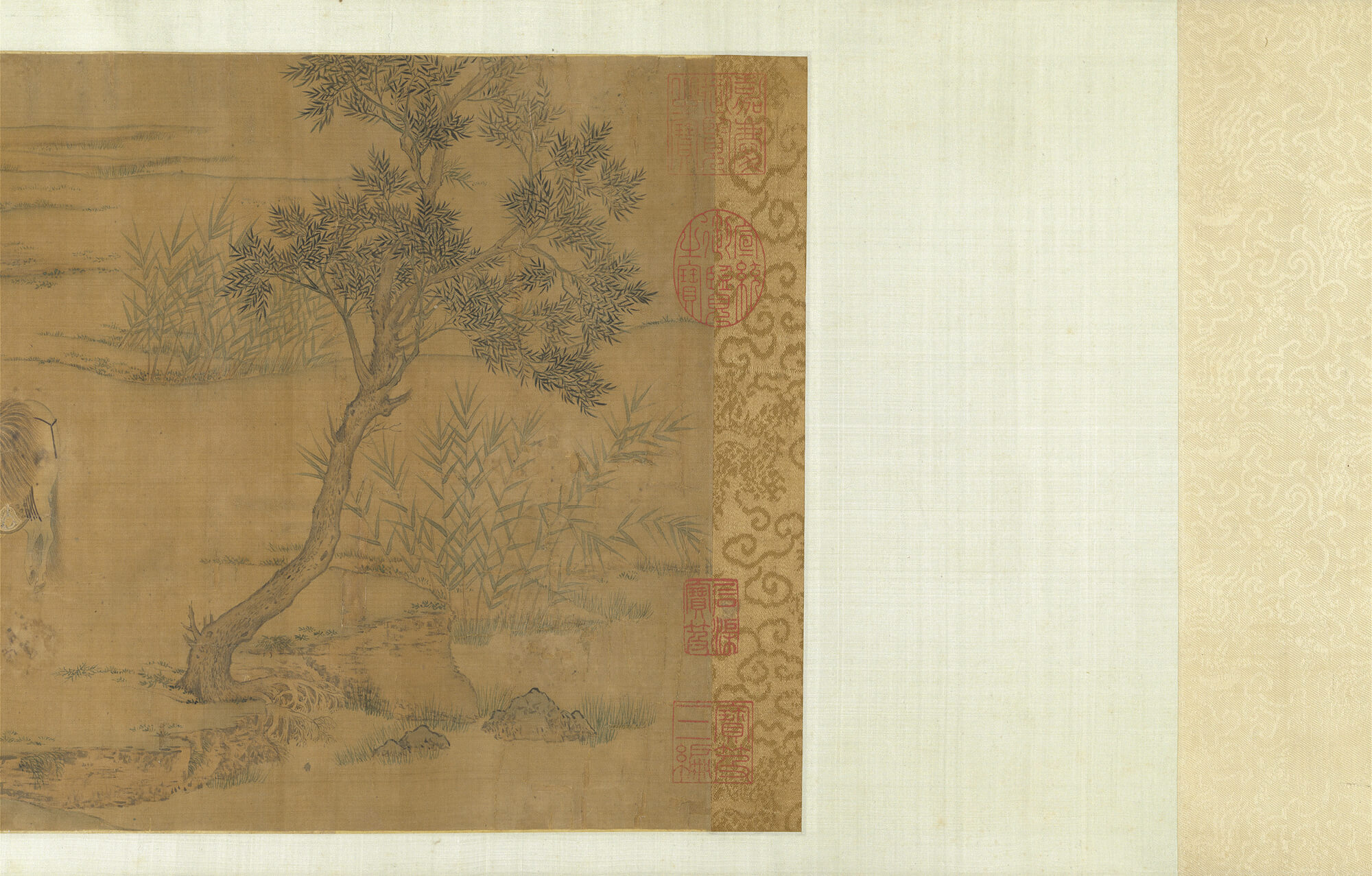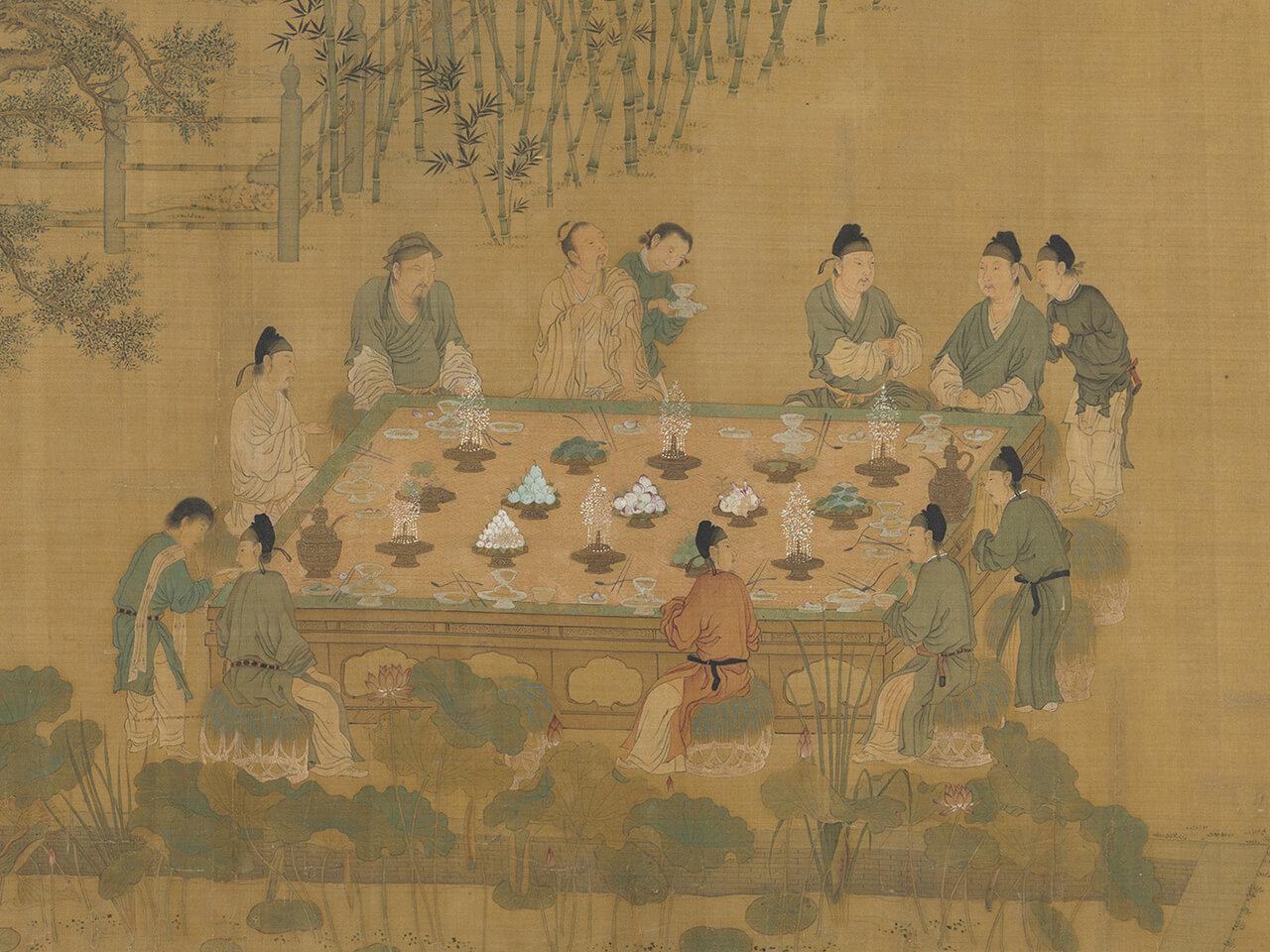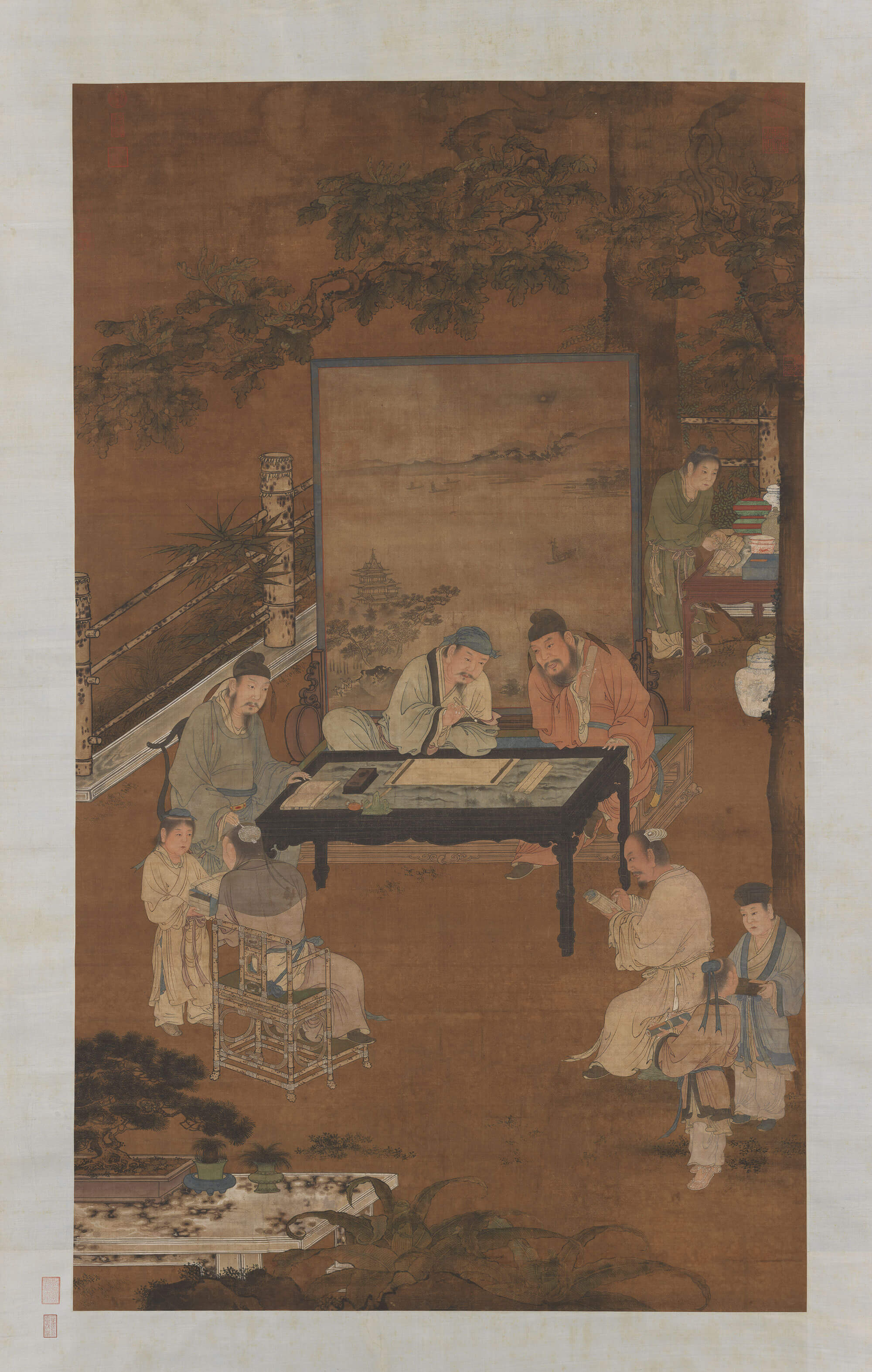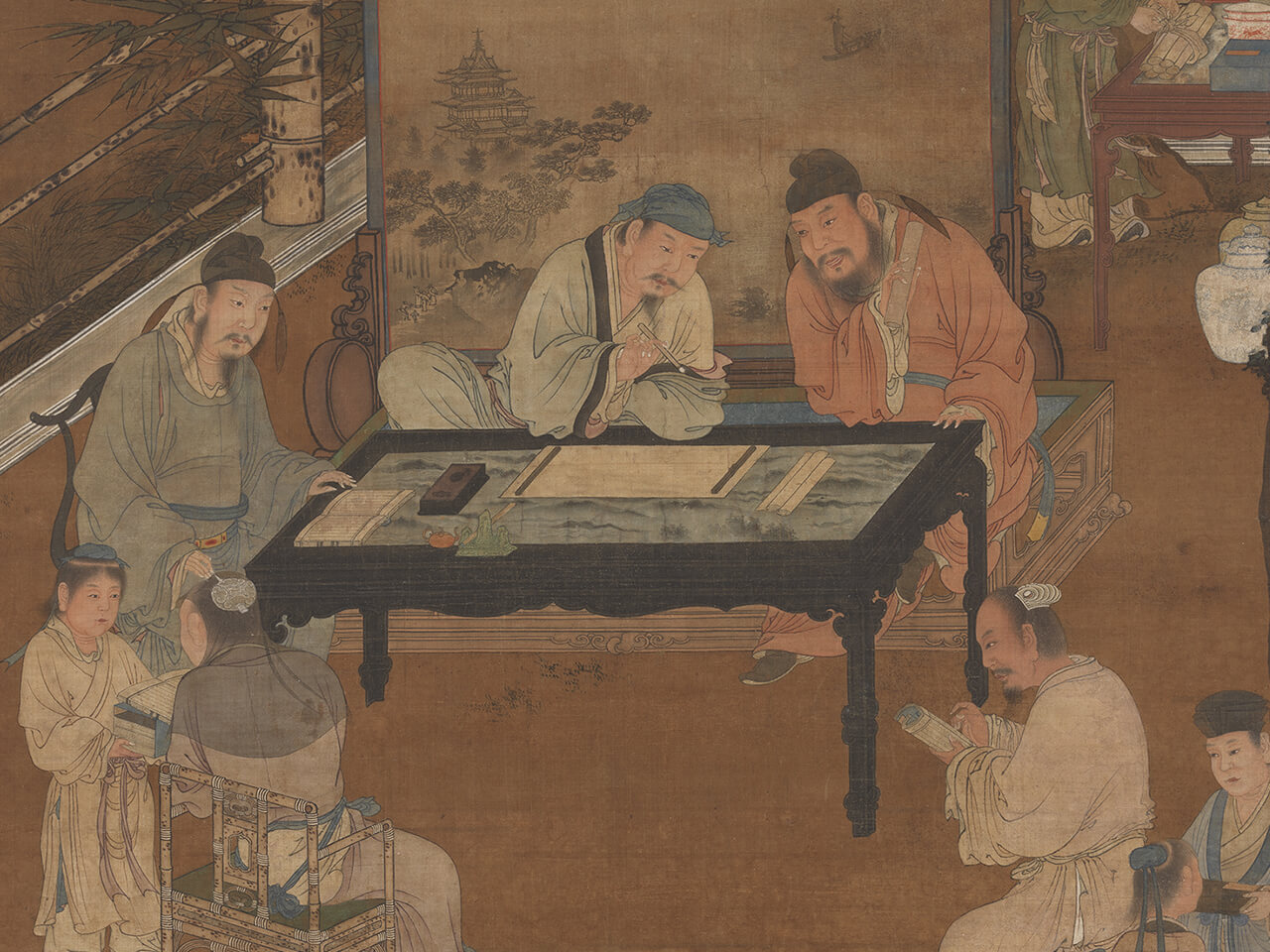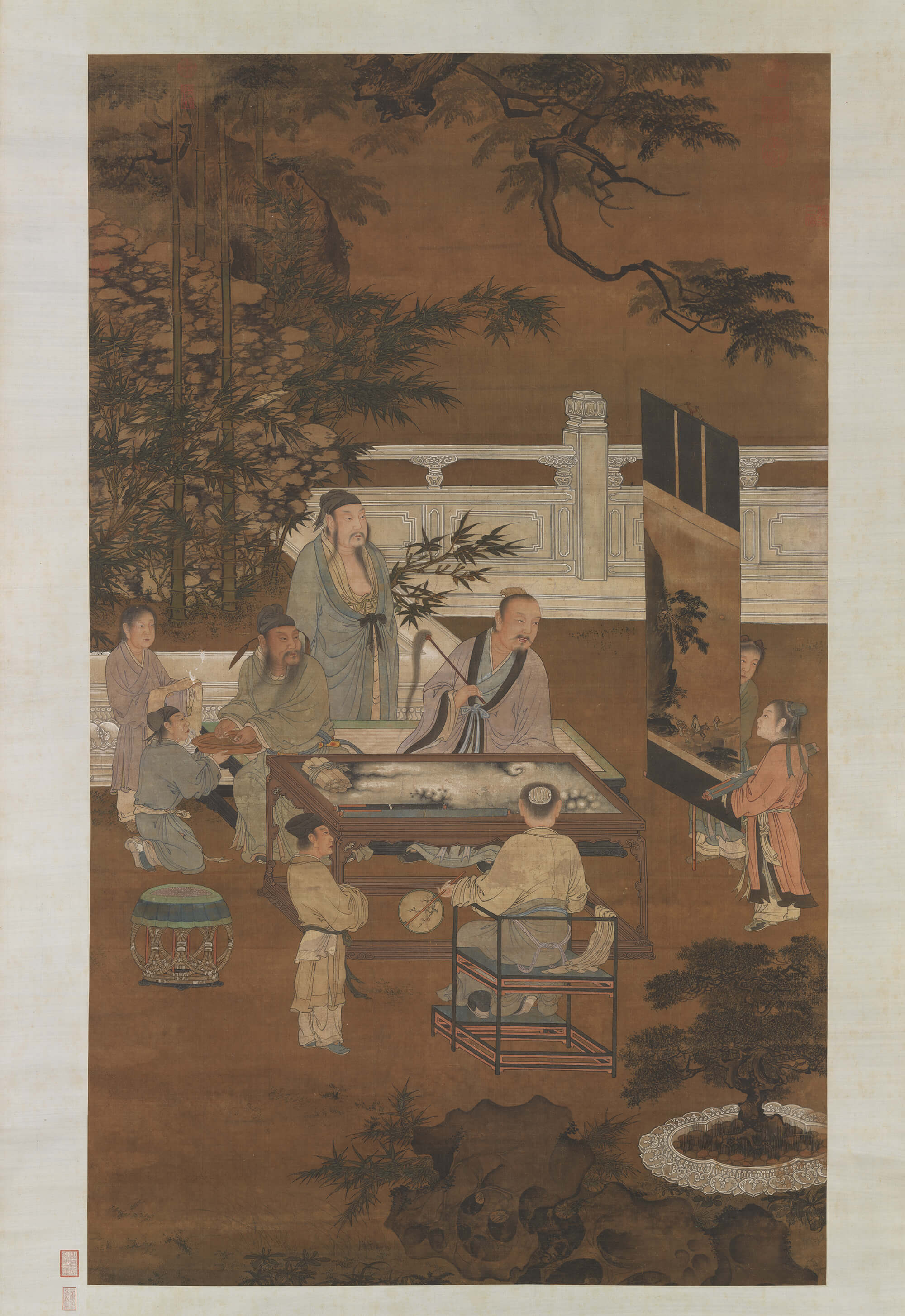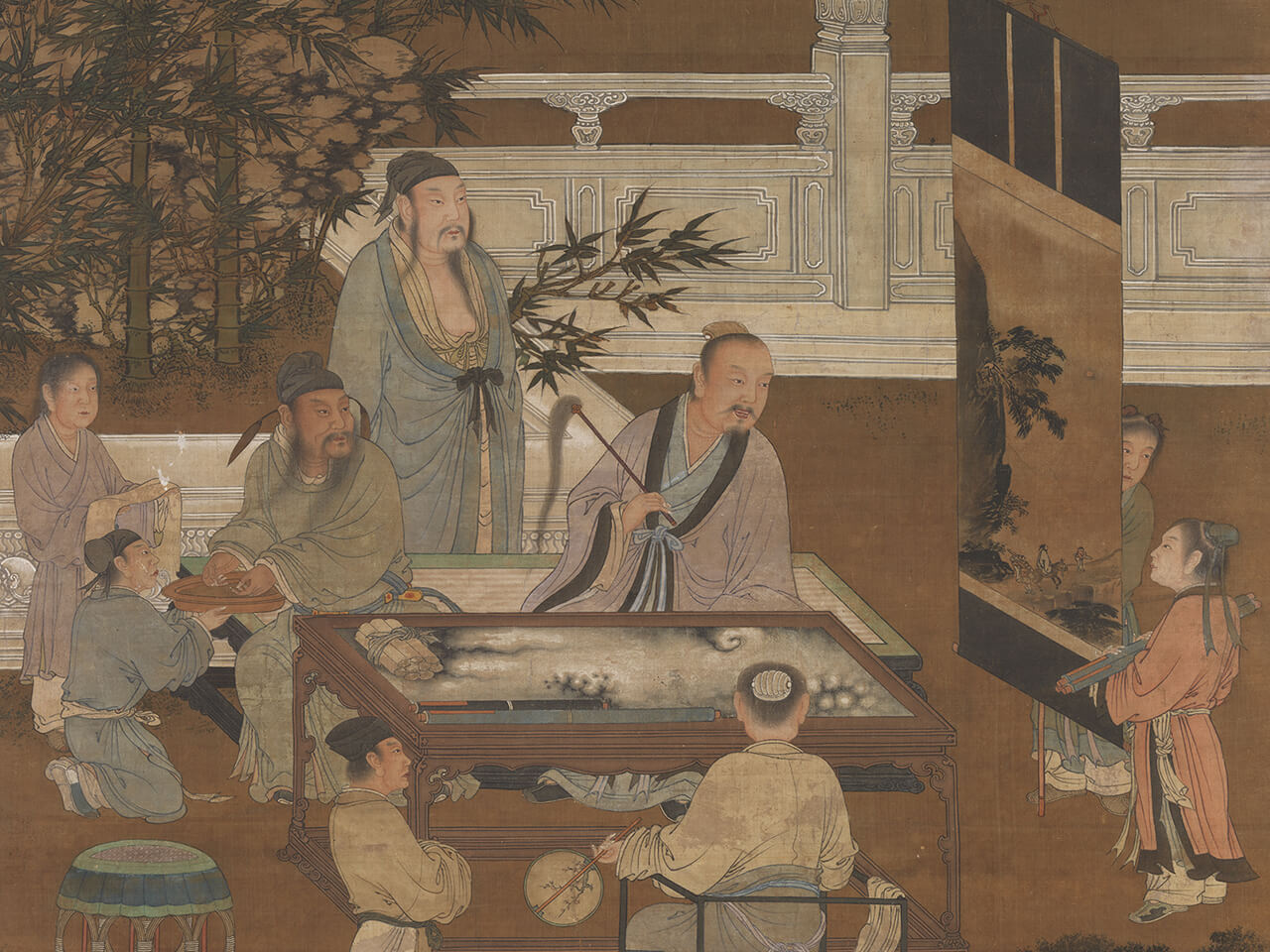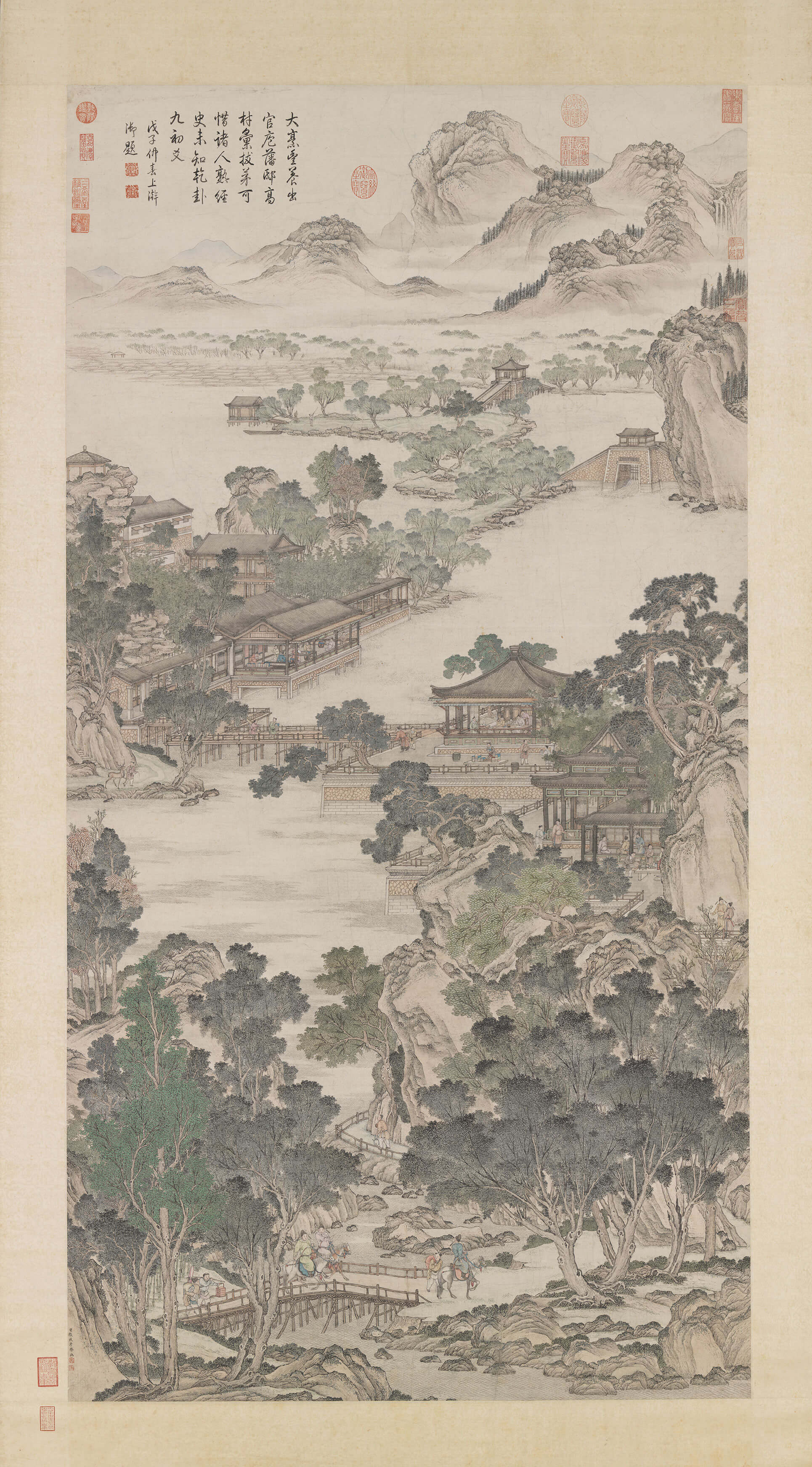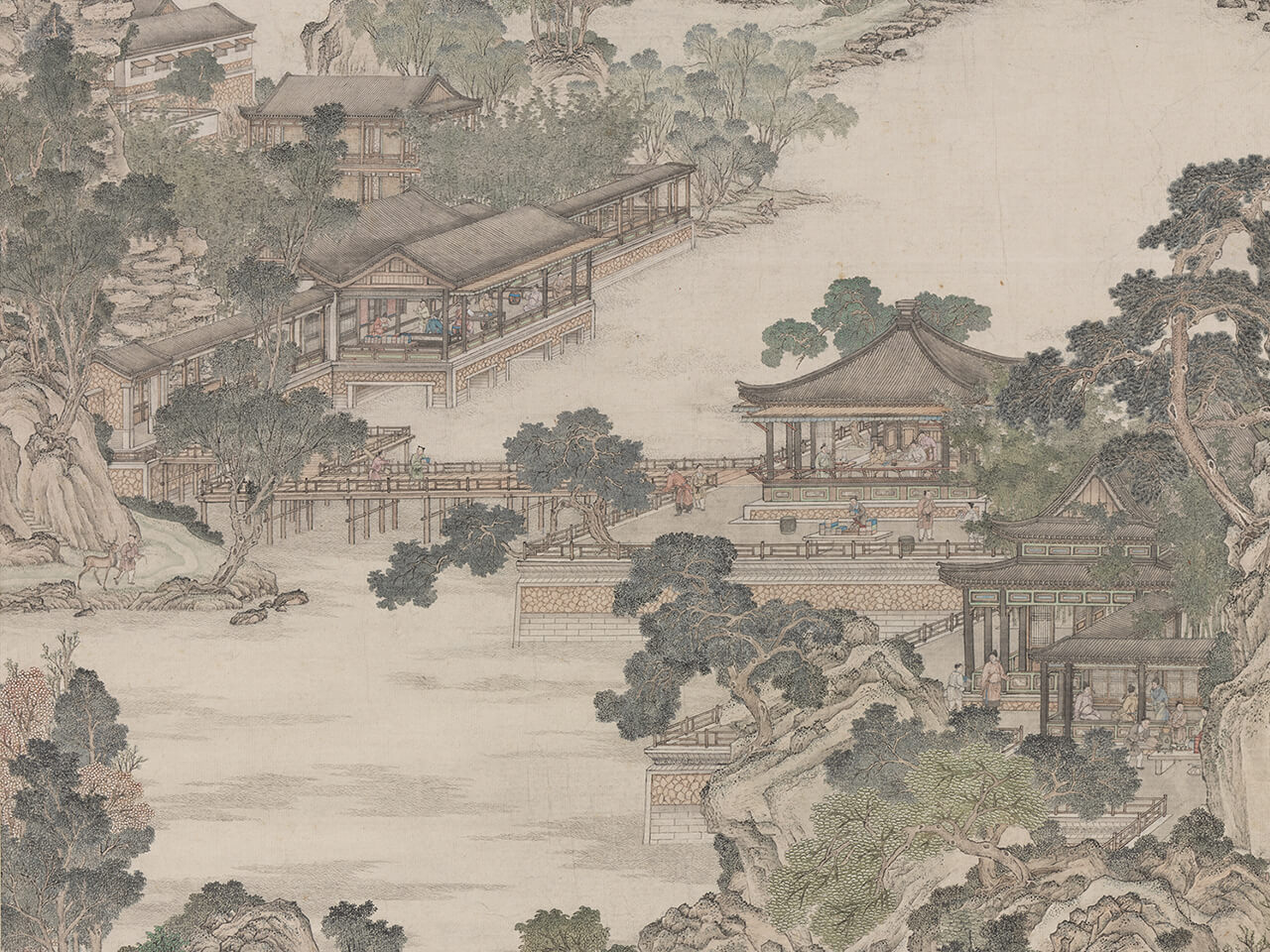Banquets of Imperial Authority
The title for this part refers to banquets related to the authority of the emperor, including events in which he participated or held through official means. Banquets and gatherings directly involving the emperor are too numerous to mention in Chinese history. They include the Twisting River (Qujiang) Banquet of the Tang dynasty, the Three Institutes and Imperial Archives of Emperor Huizong in the Song dynasty, and the Star of Literature (Kuizhang) Hall of Emperor Wenzong (Tugh Temur) in the Yuan dynasty, all of which were sponsored to develop the arts, culture, and learning at the time. However, perhaps most representative of this subject is "The Eighteen Scholars," which continued to inspire longing among many in later generations. Circulating in a large number of paintings, this subject over the years assumed a great variety of manifestations. Evolving from the model of portraying meritorious officials in early years to the representation of elegant gatherings after the Song and Yuan dynasties, the meaning behind such paintings also changed with the times.
-
Literary Gathering
- Attributed to an anonymous artist, Tang dynasty (618-907)
This painting depicts the scene of a banquet taking place in a garden by the side of a pond. A group of scholars sits around a black-lacquered table placed underneath a tree, the table filled with food and drink as well as various utensils and floral arrangements. Two figures are standing under the tree in conversation with young attendants shown in the foreground preparing tea. The contents and composition here are similar to "Literary Gathering" by the Song dynasty emperor Huizong (1082-1135) in the National Palace Museum collection, but the poses and expressions of the figures are slightly inferior, suggesting this as a copy from the Ming dynasty (1368-1644).
Scholarship also points out that the subject of this work belongs to "The Eighteen Scholars" tradition, its manifestation as a literary gathering being a development that occurred after the Song dynasty.
These works are from a set of four paintings that depict scholars in court robes in beautiful garden settings meticulously arranged with various display items. They are engaged in playing the zither, the game of Go, and also painting and calligraphy, respectively. The expressions and movements of the figures are more reserved, intentionally conveying a loftier and more refined atmosphere. As for the precisely rendered objects and furniture, their forms are also more subdued and the coloring classically archaic. Although not focused on opulence, the subject matter reflects a restrained yet sumptuous taste of the scholar. Attributed to a Song dynasty artist, the set was probably done in the Ming dynasty (1368-1644) to imitate that of the Song.
-
Ascending Yingzhou
- Zhang Tingyan (fl. 18th c.), Qing dynasty
Before Emperor Taizong (r. 626-649) ascended the throne in the Tang dynasty, he gathered a group of eighteen scholars at the Hall of Literature in his residence while still the Prince of Qin. Because the scholars were distinguished for their service, occupied key positions, and were well rewarded for their contributions, later generations referred to them as "ascending Yingzhou." The latter is a reference to an island mountain of the immortals, which reflects the envy of later generations.
The composition, proportion of the figures, and the activities in this painting all differ from those seen in works on the same subject from the Ming dynasty and afterwards. The composition here employs a "Z"-shaped arrangement in which the scenery is presented in proportion from the foreground to the distance. The scholars are scattered about the garden setting discussing the Classics instead of being occupied with the four leisure activities of the traditional scholar (zither, Go, calligraphy, painting). As such, it appears to be a new form of interpretation that was developed at the Qianlong court in the eighteenth century.
